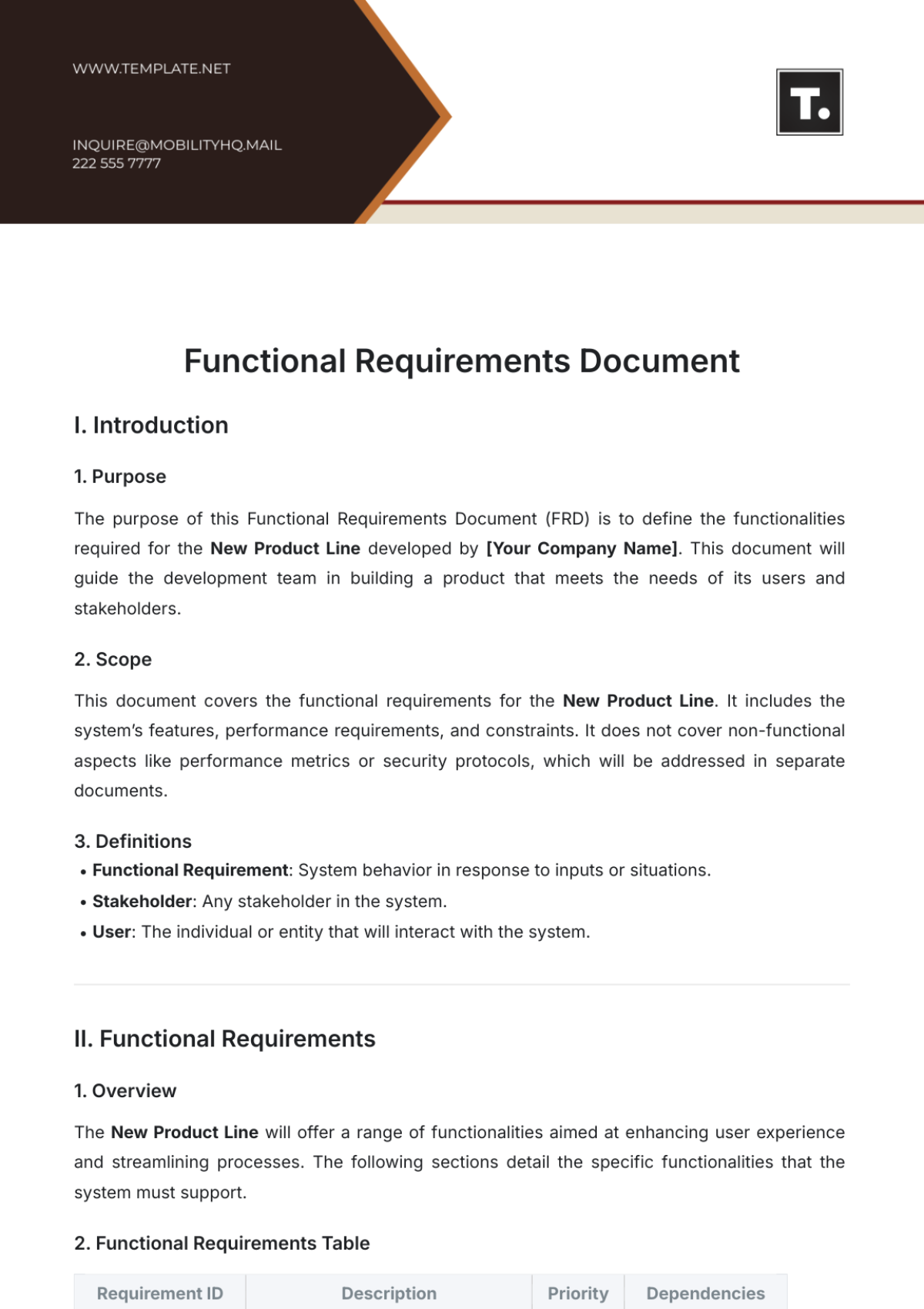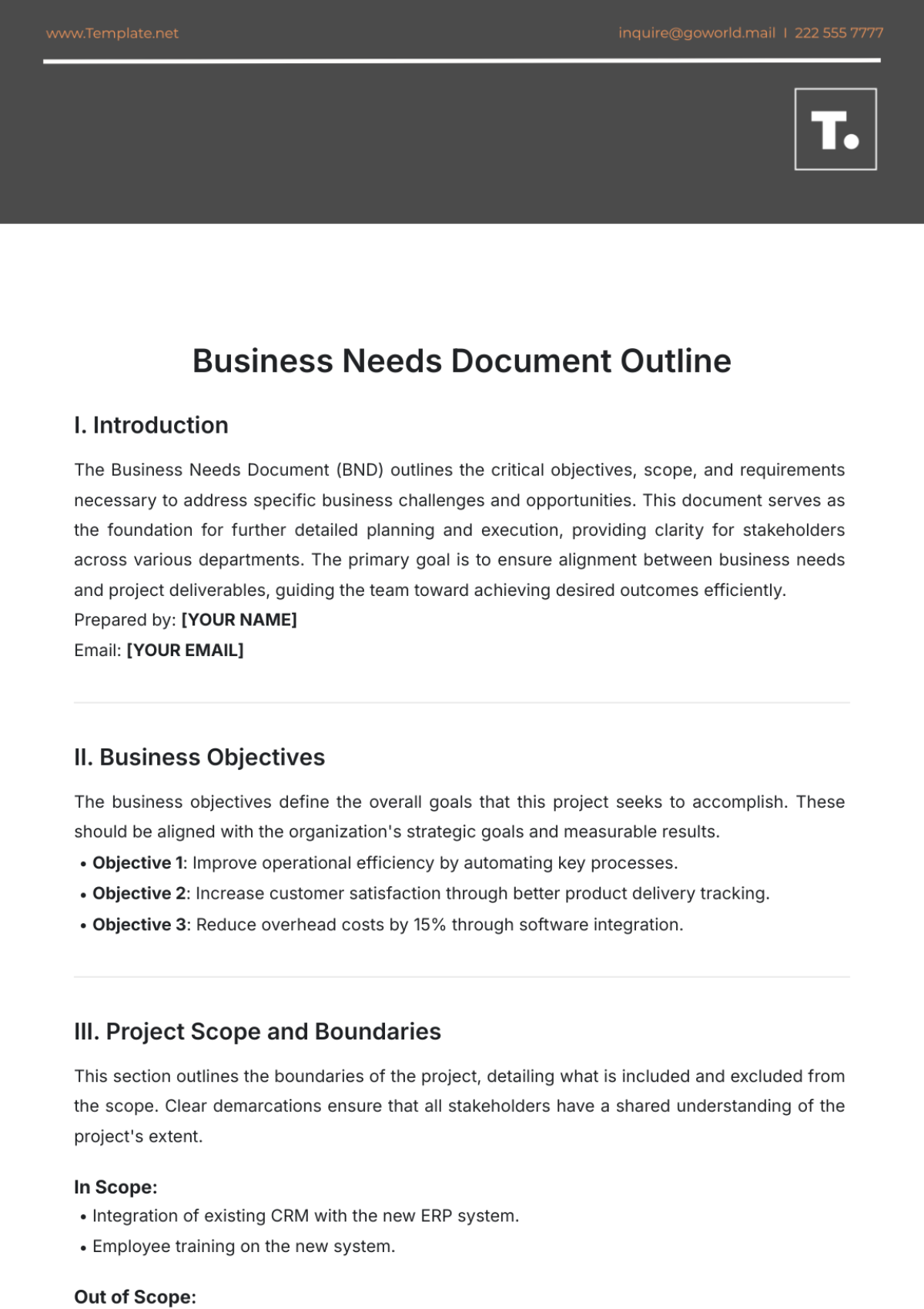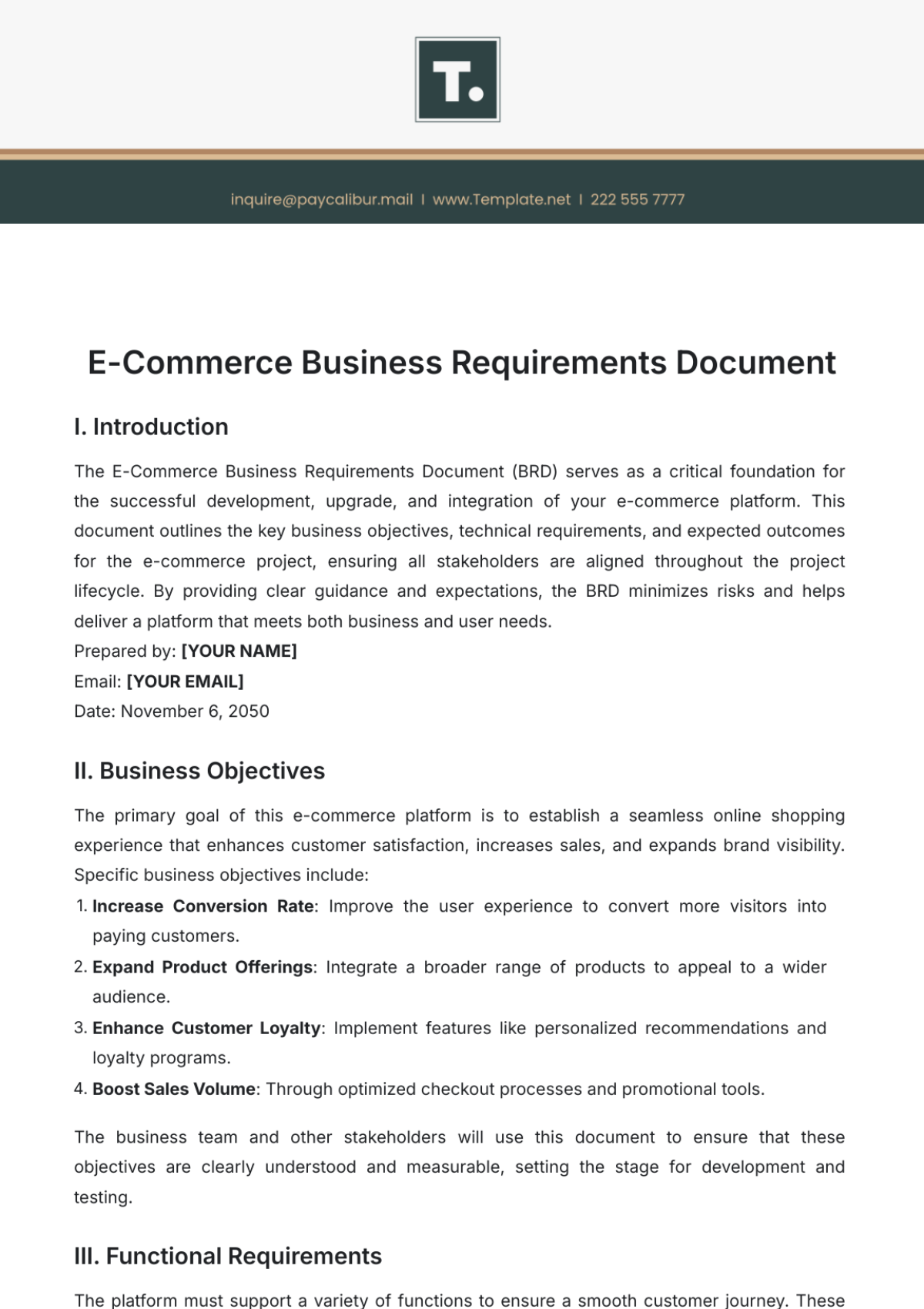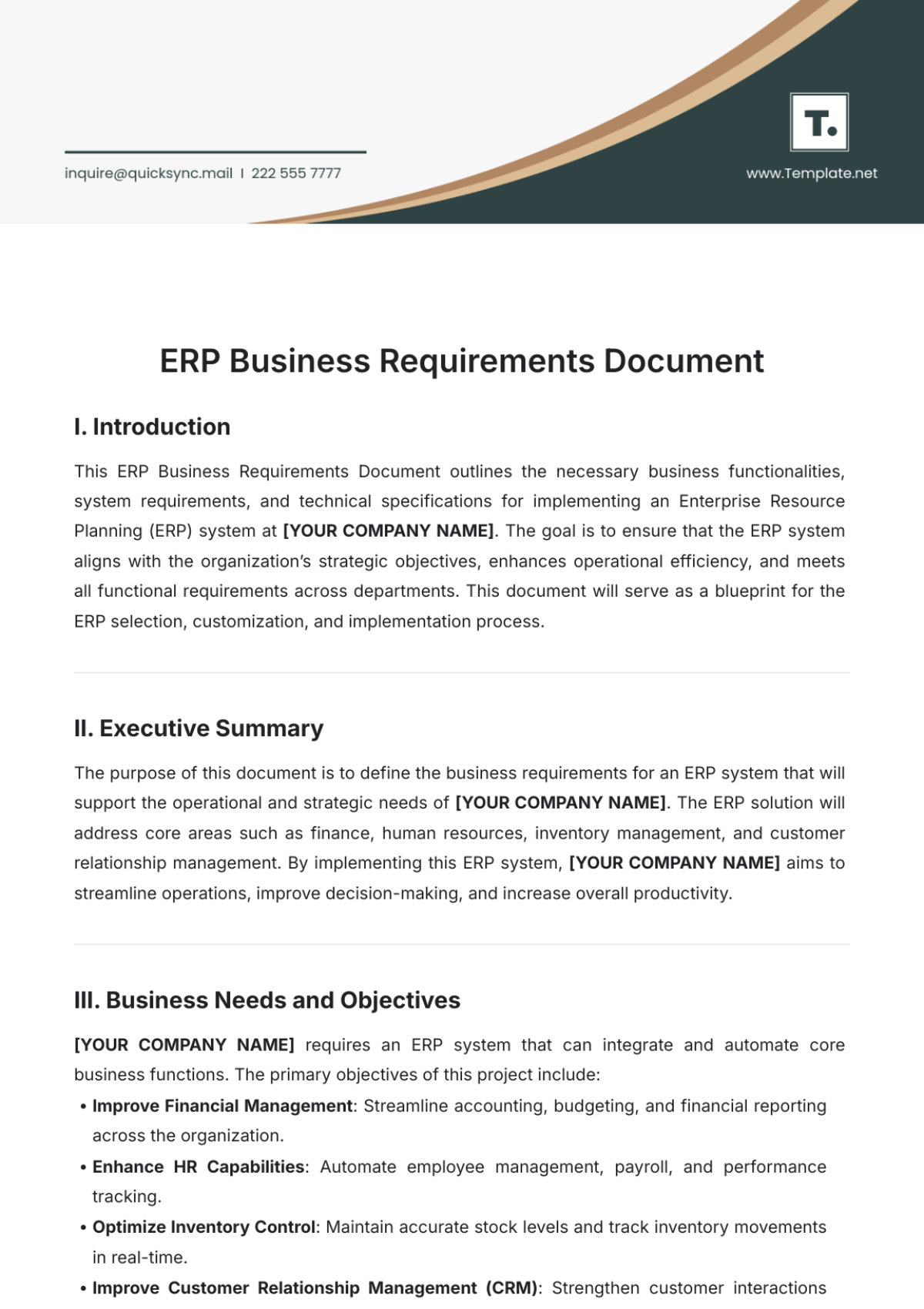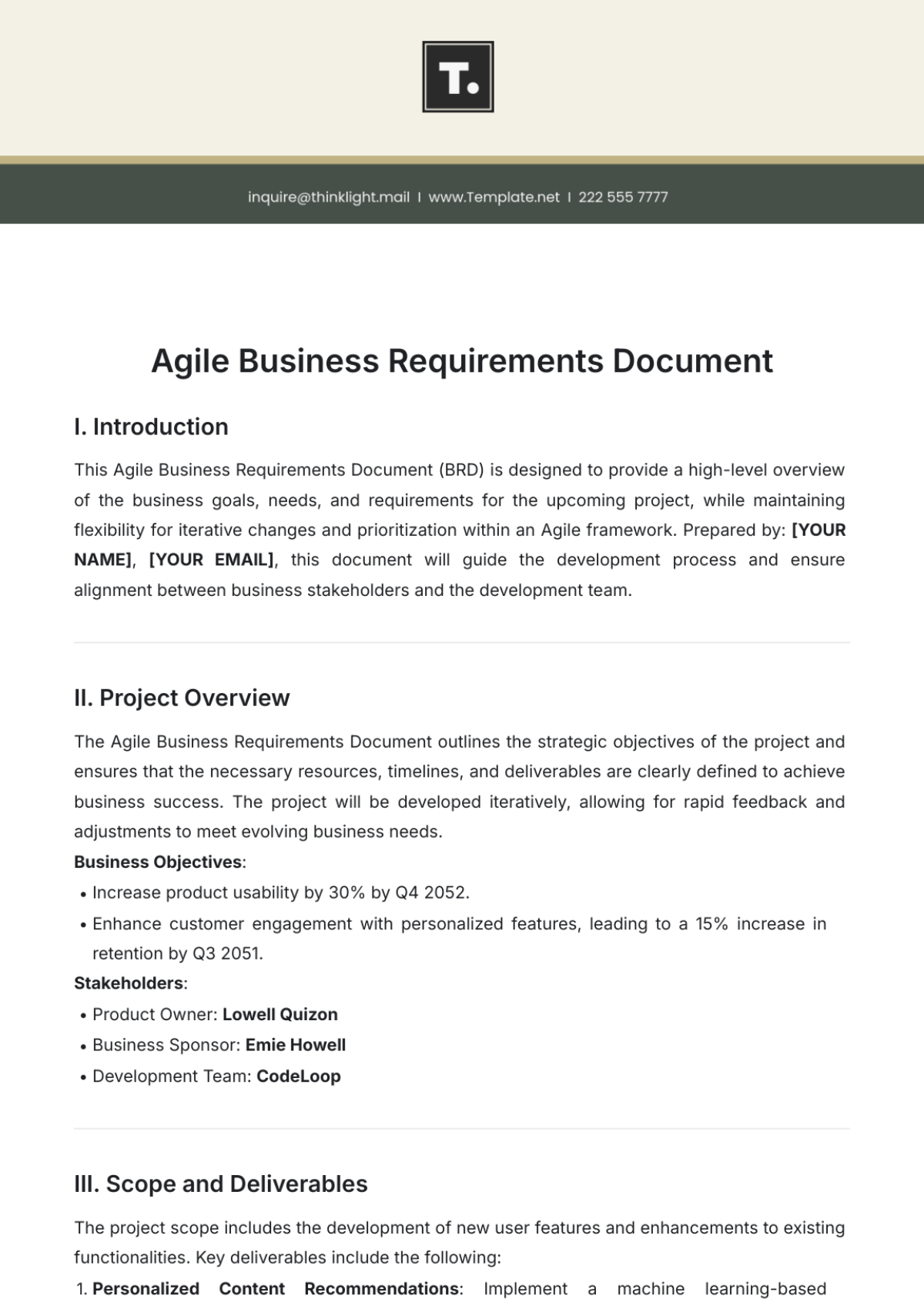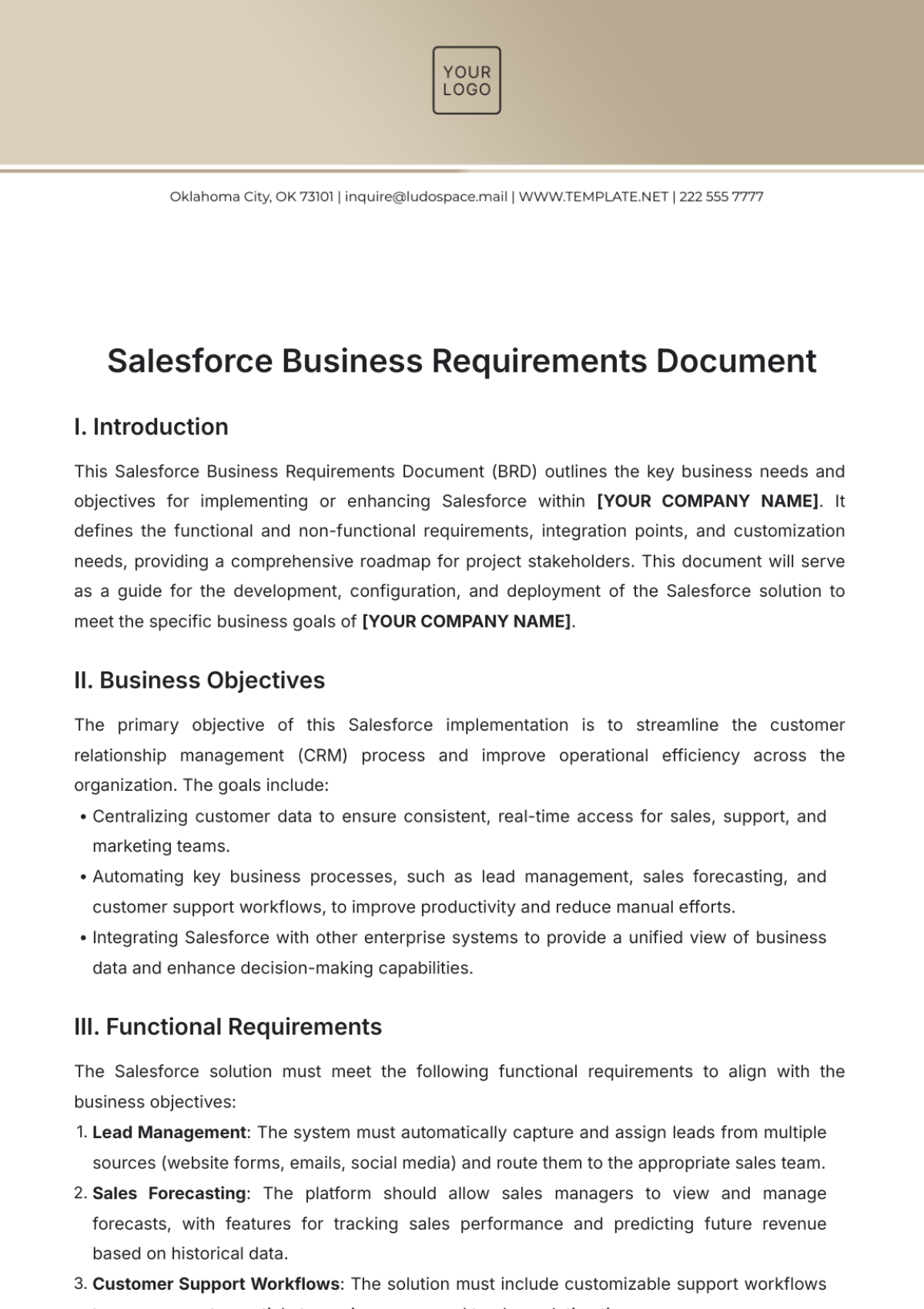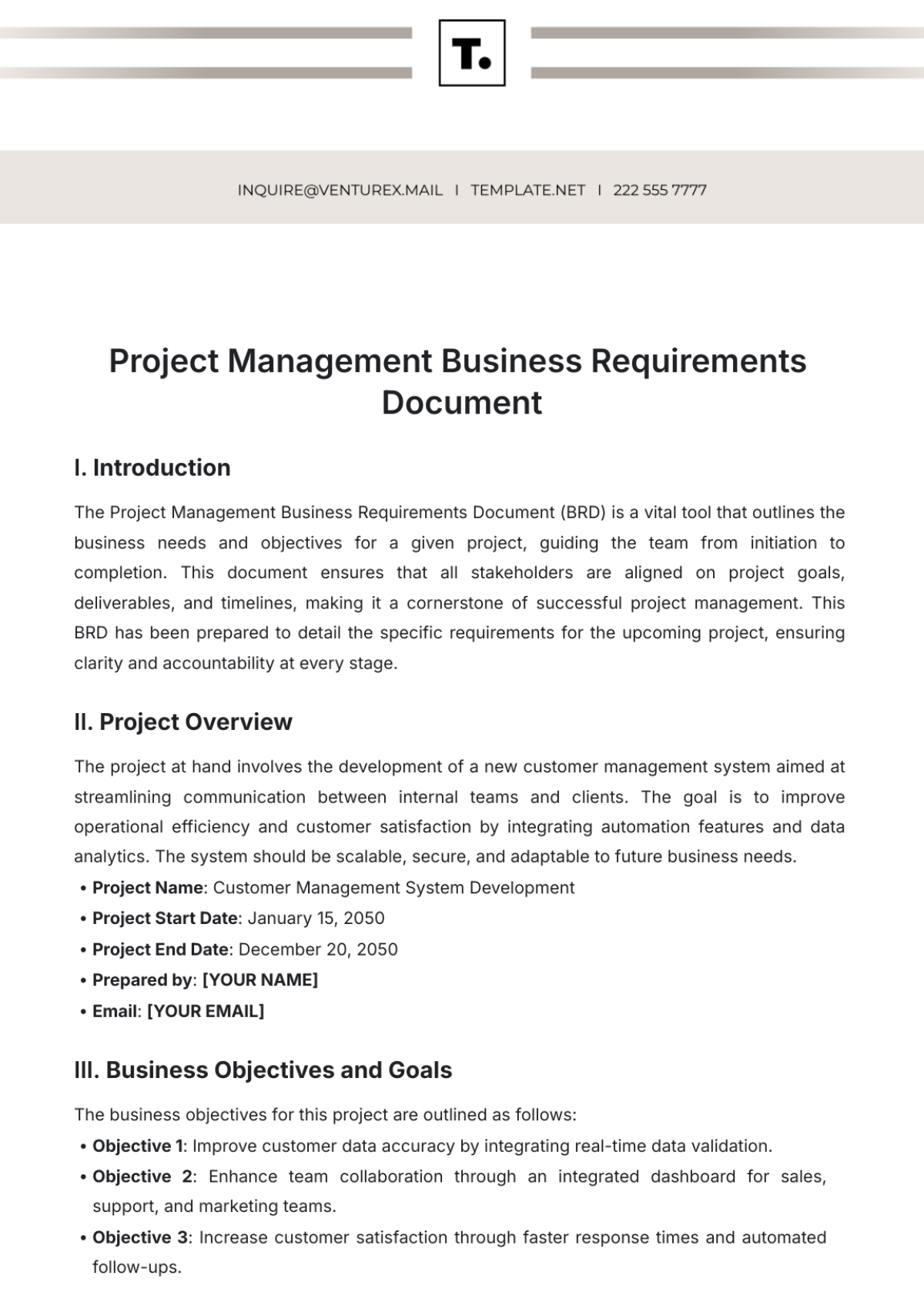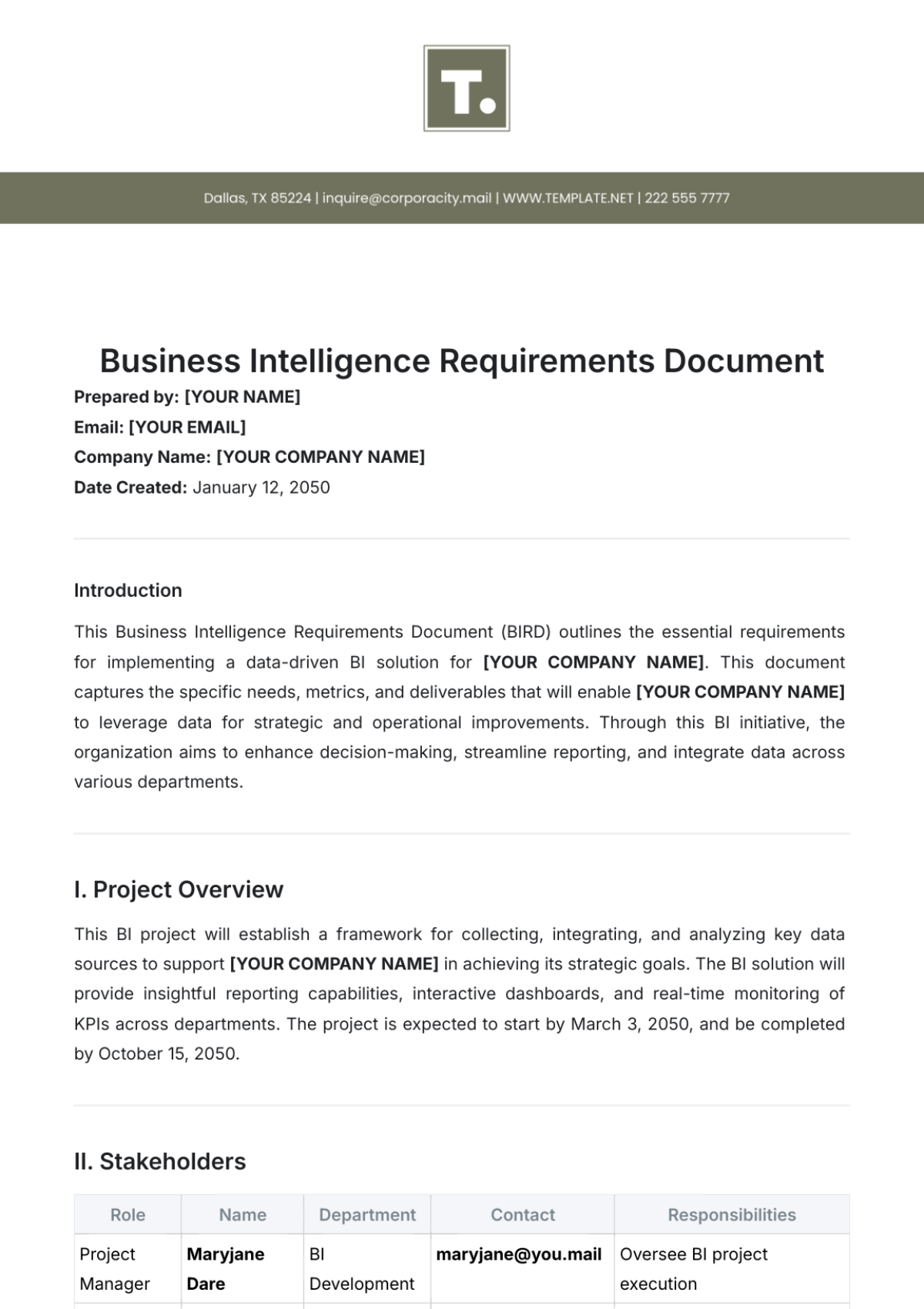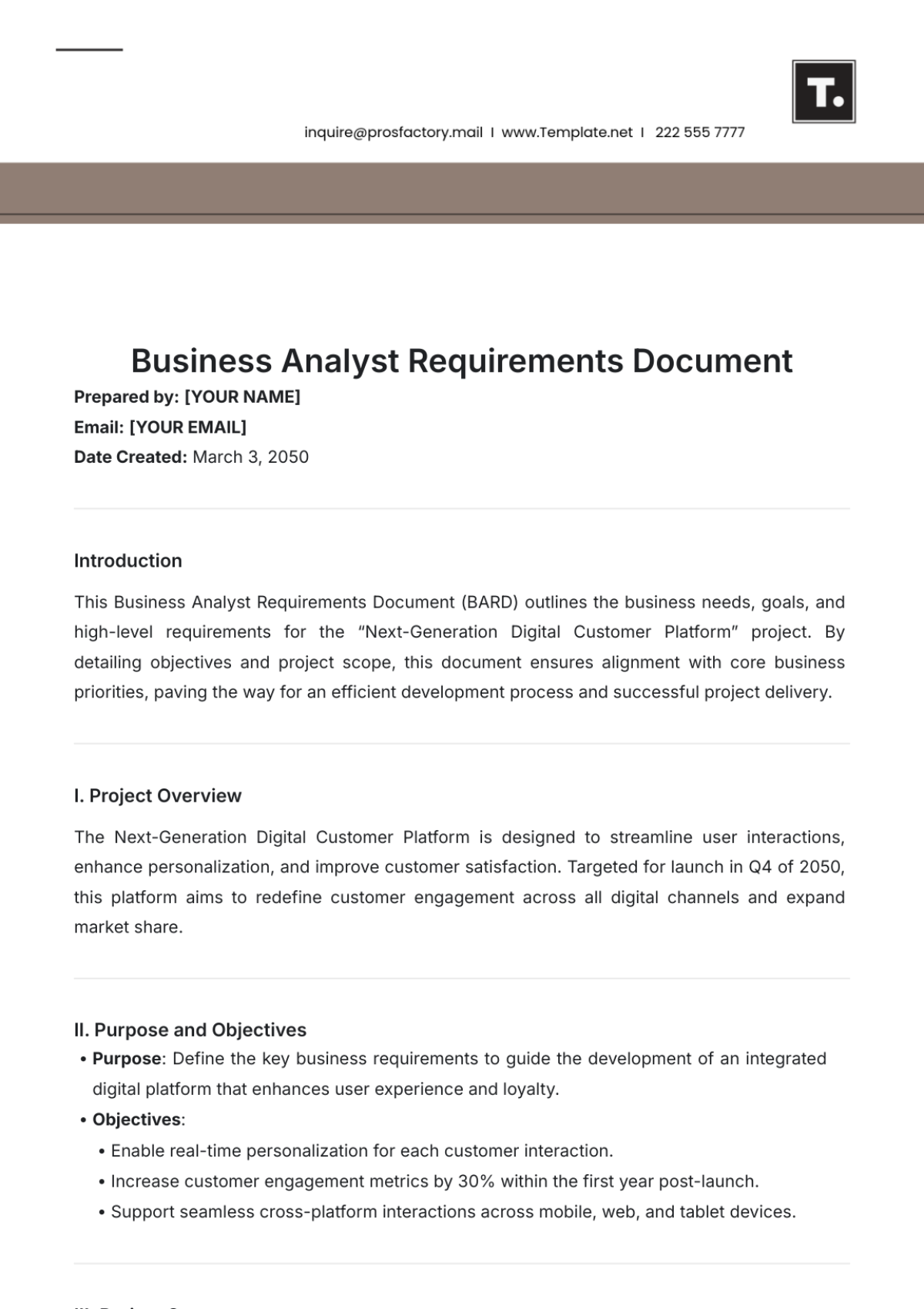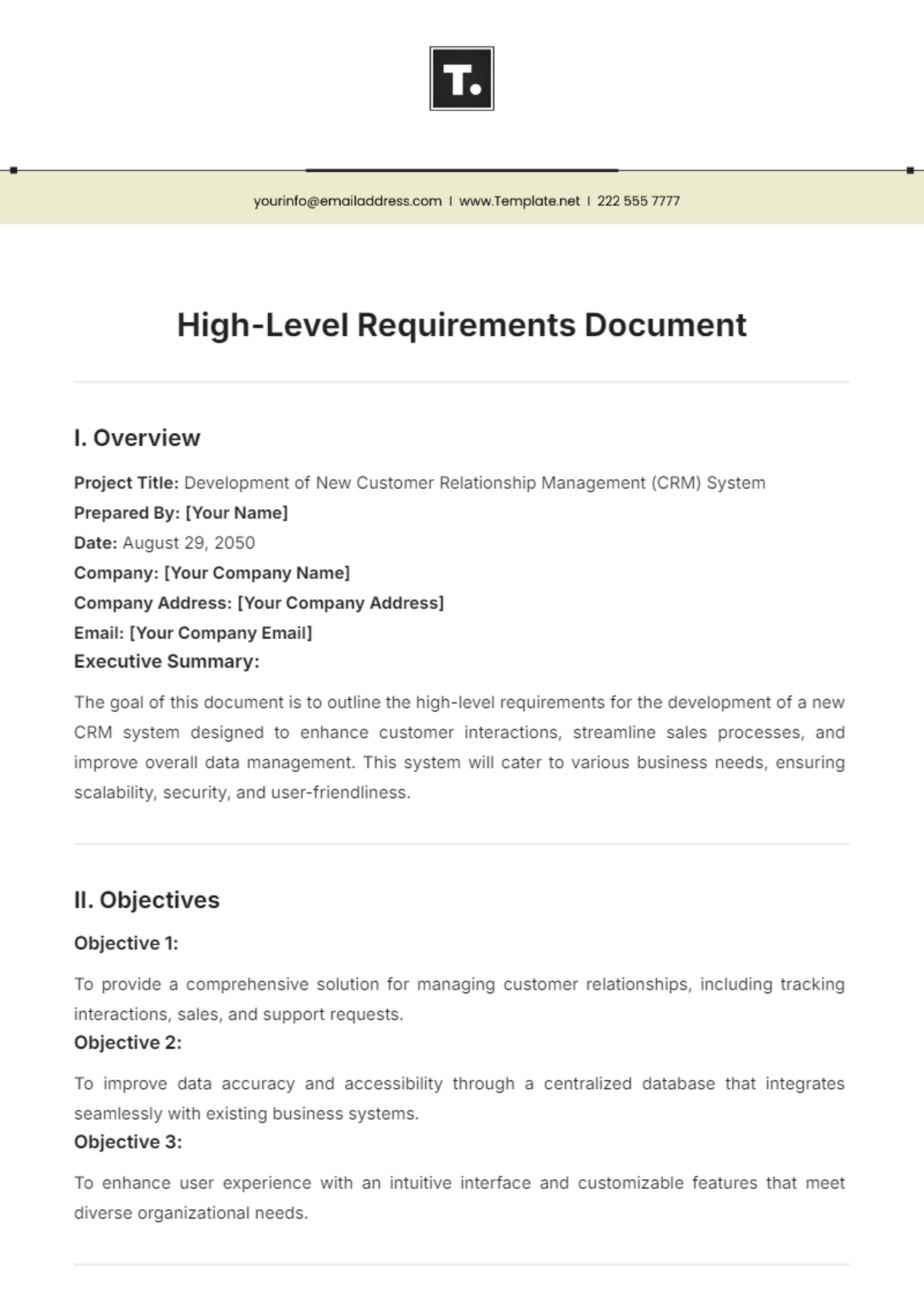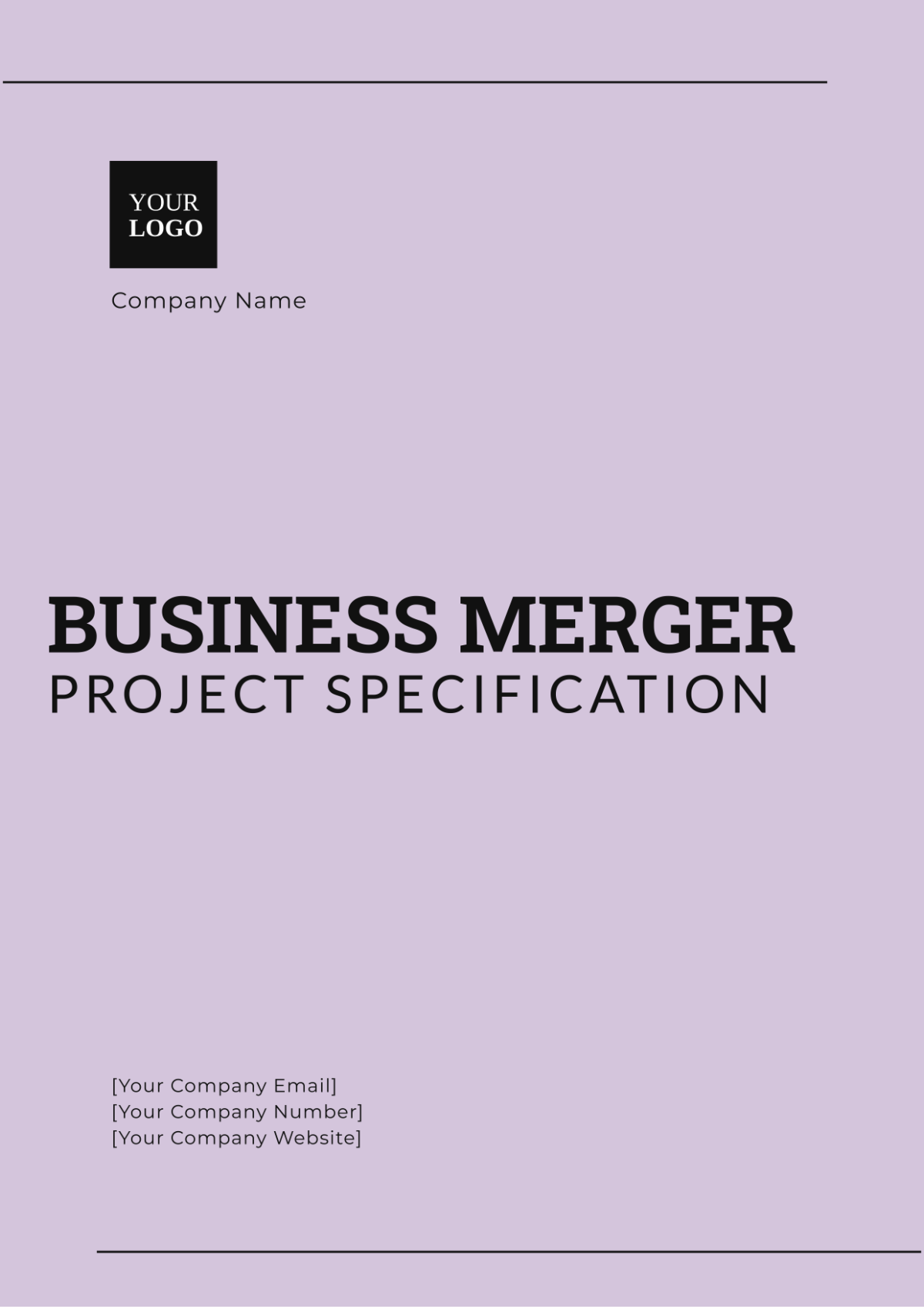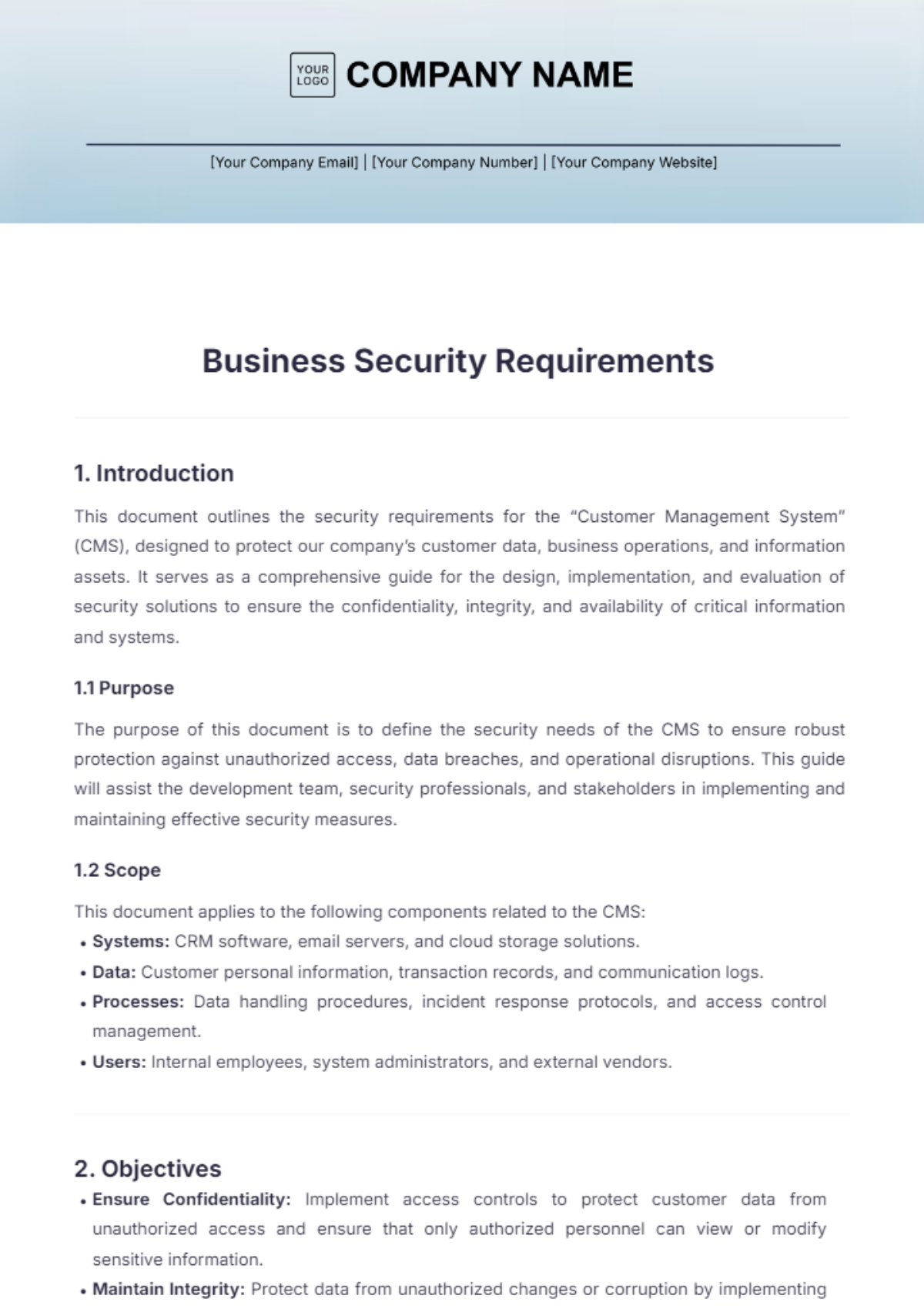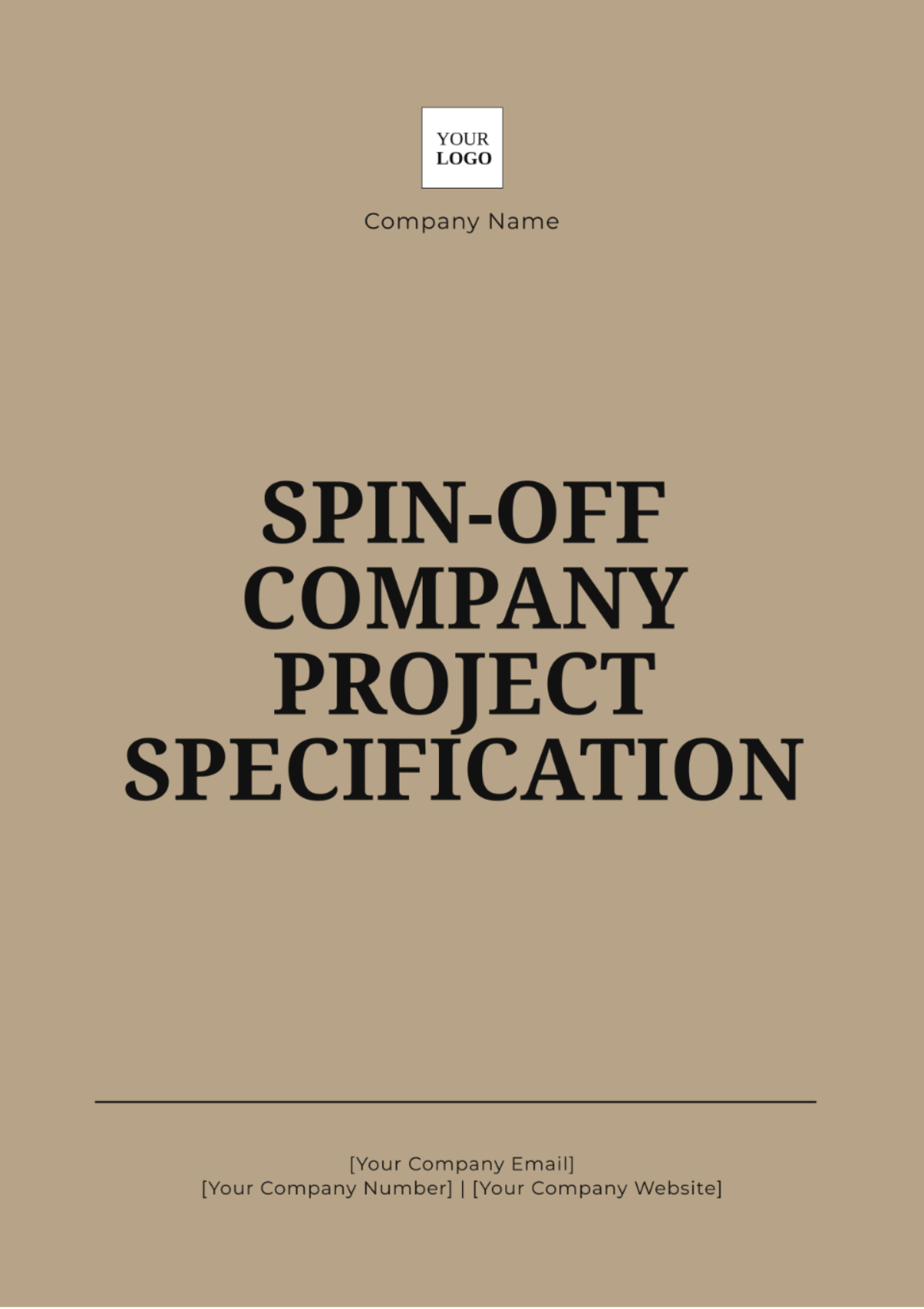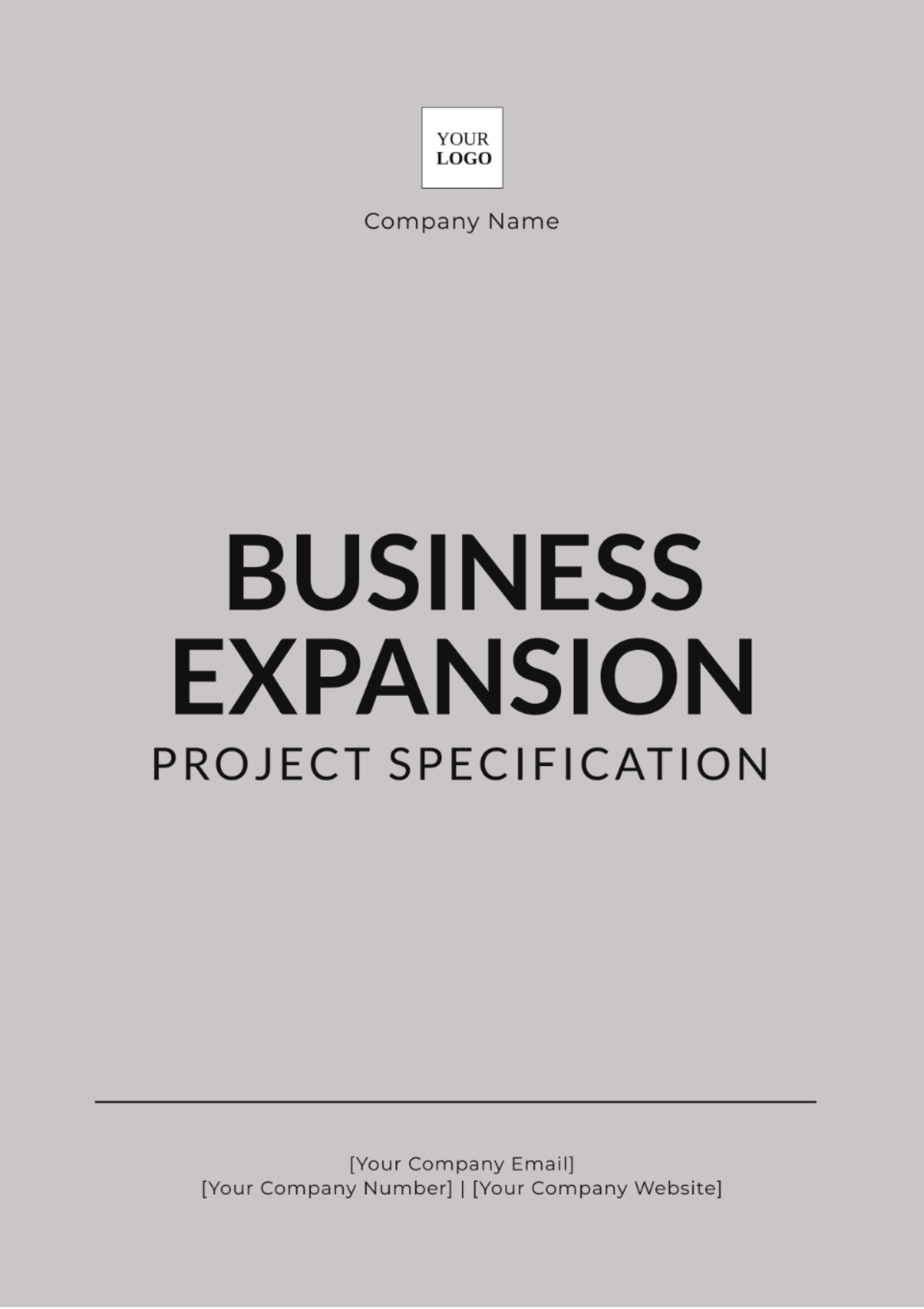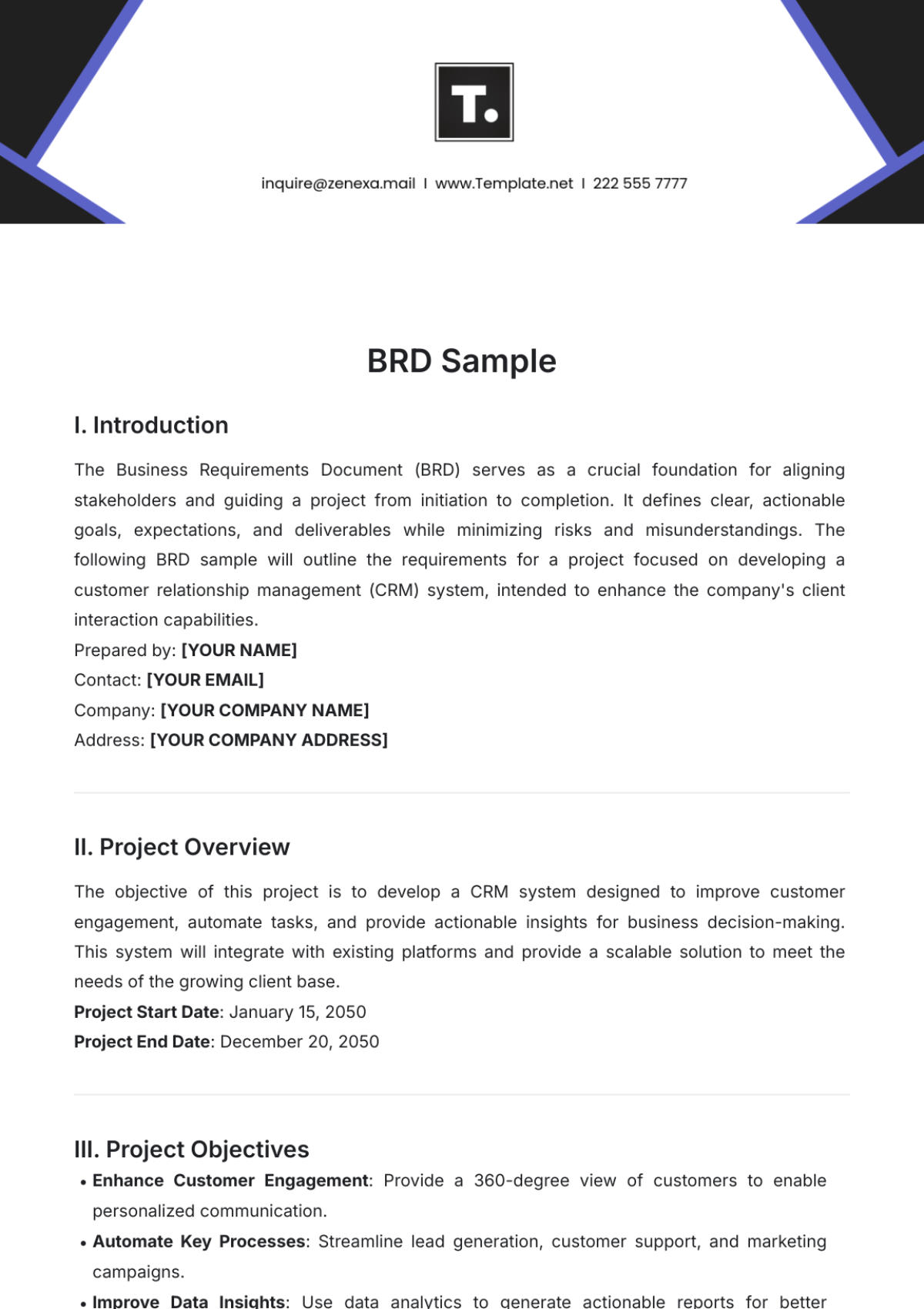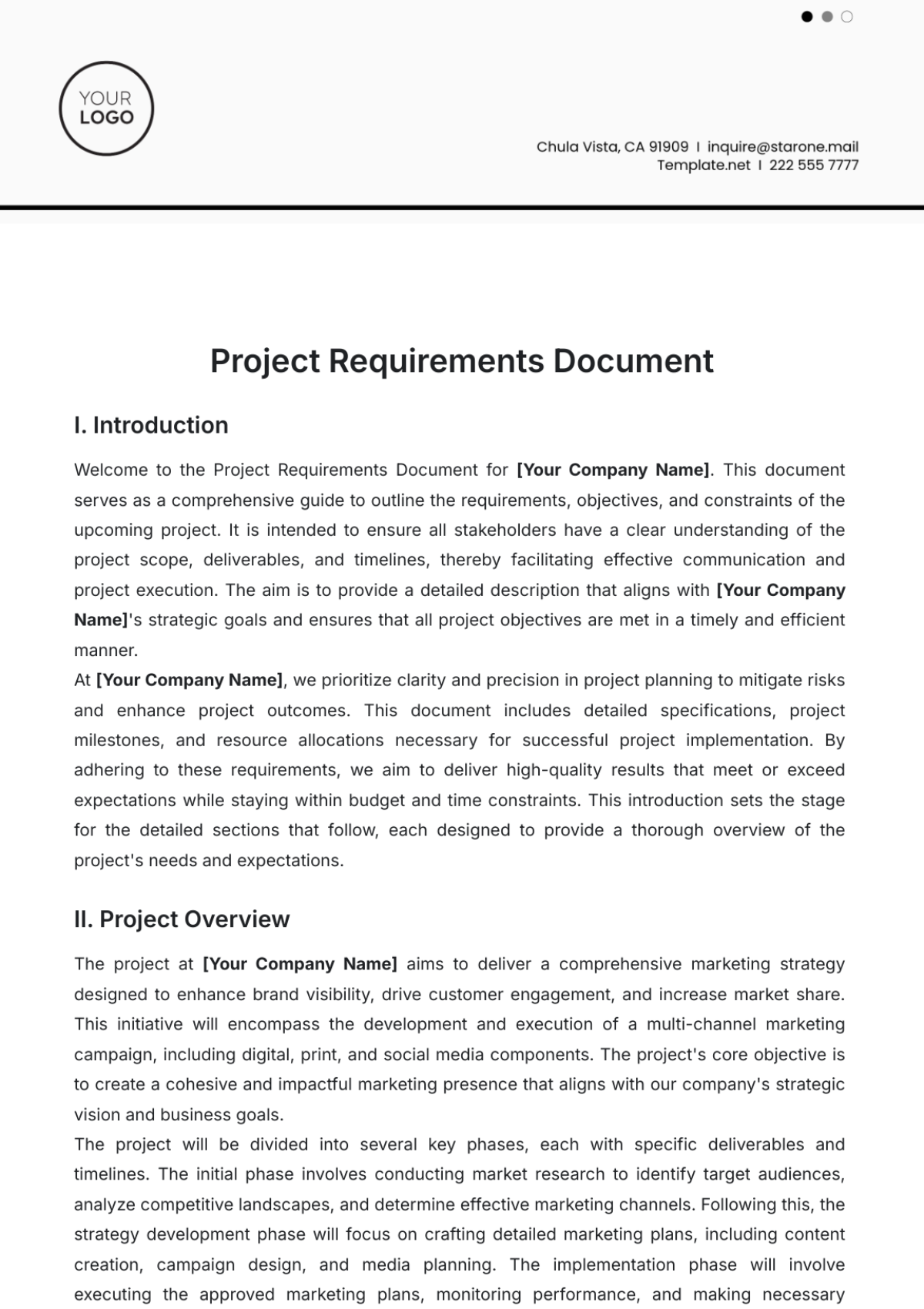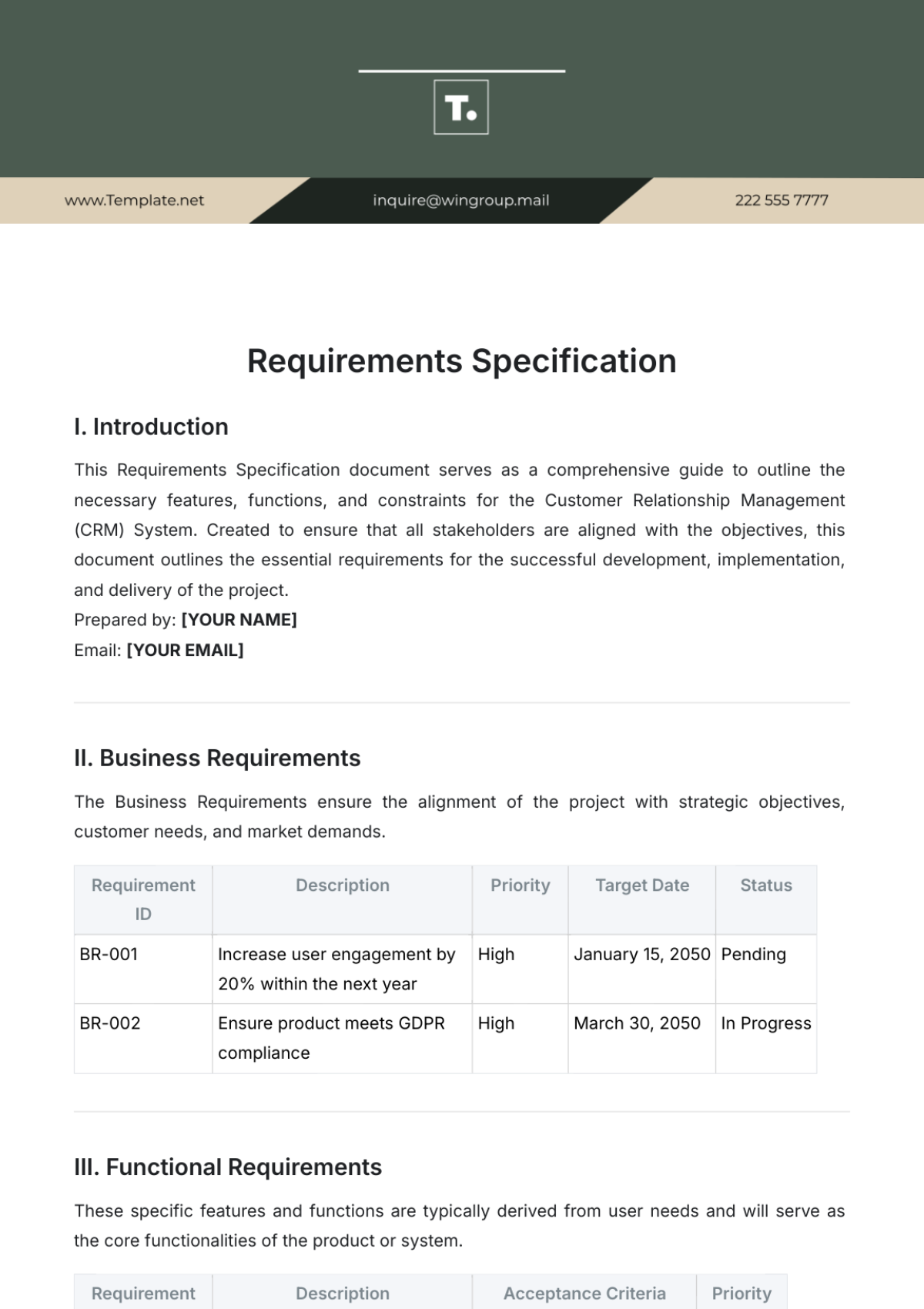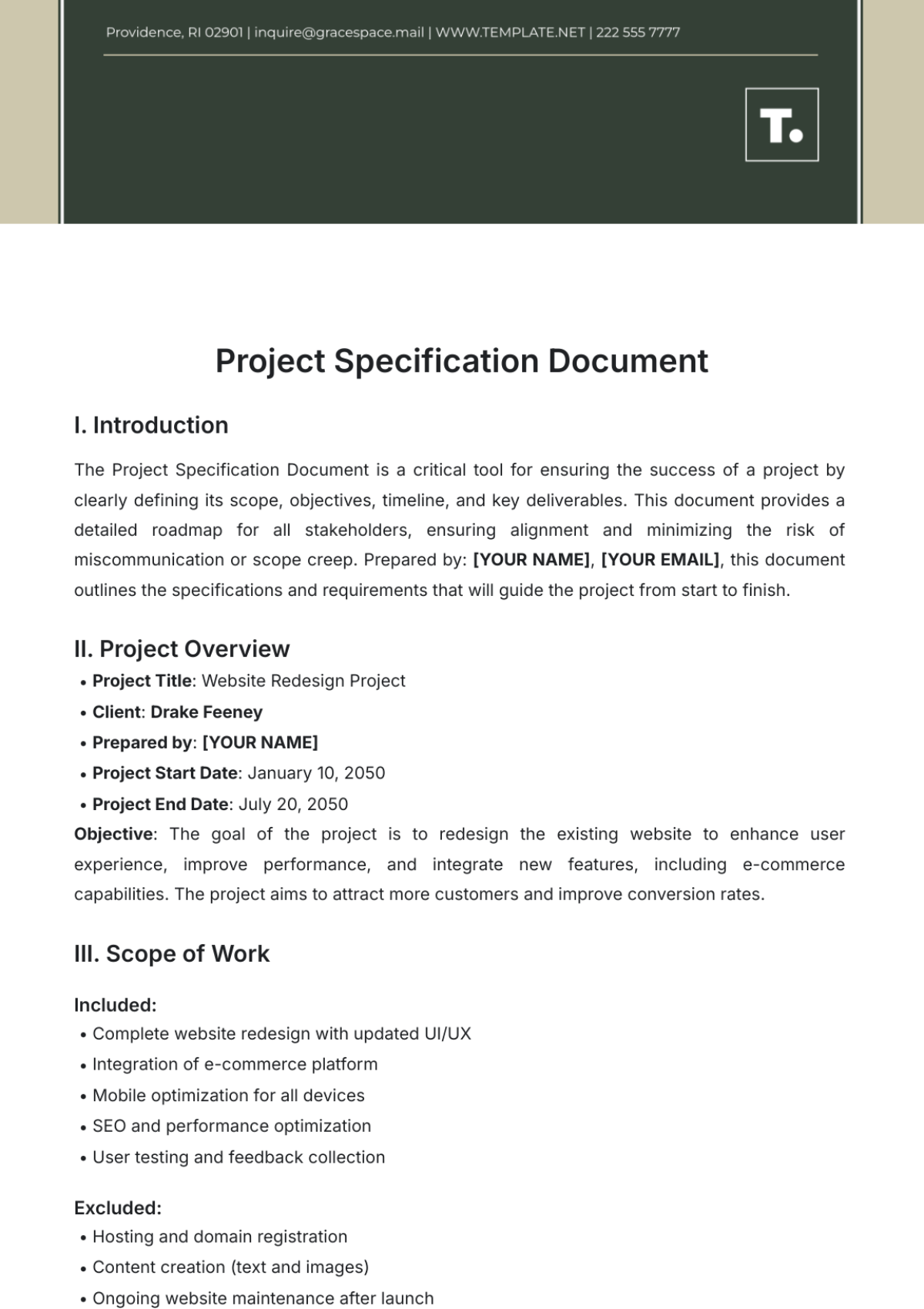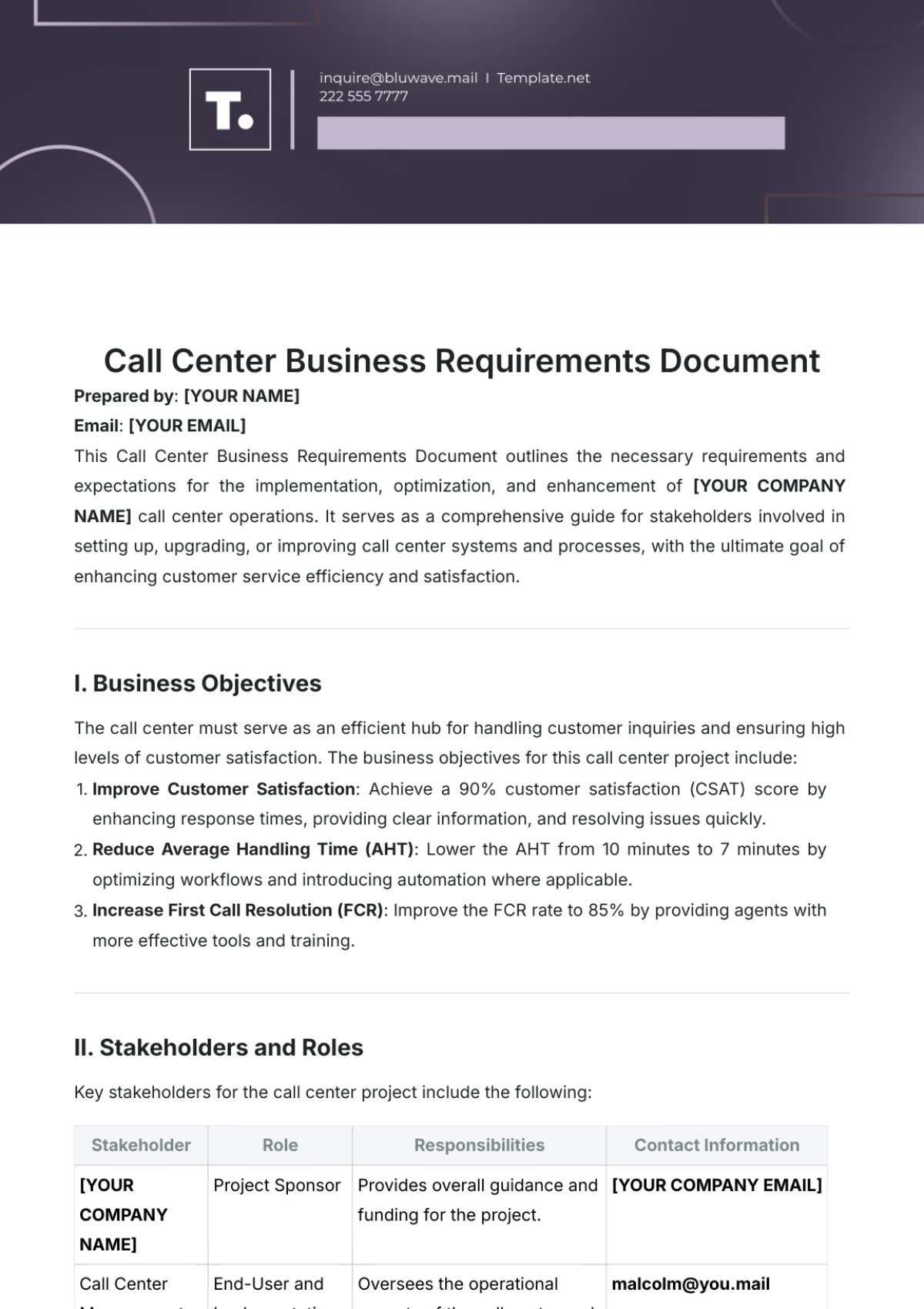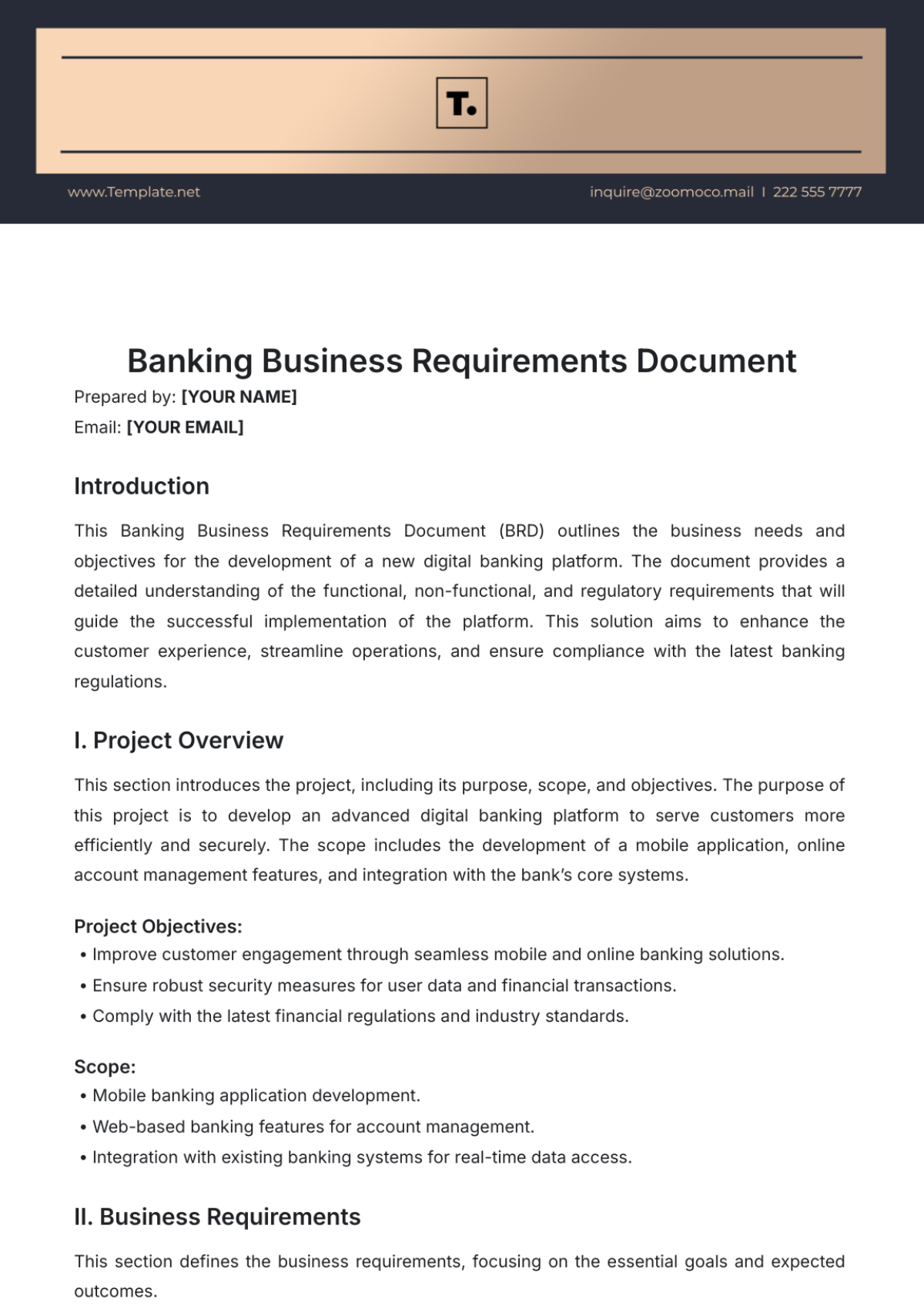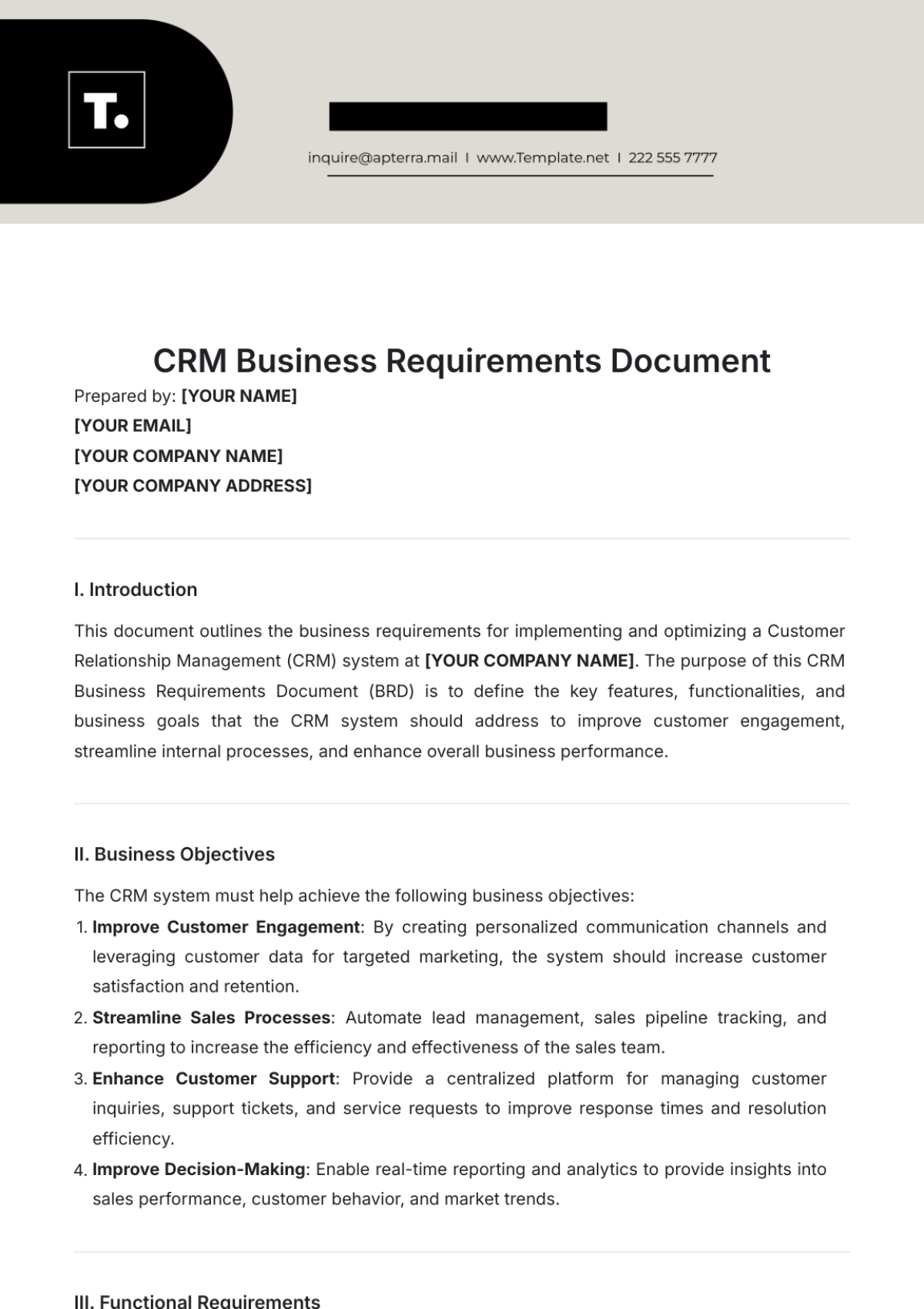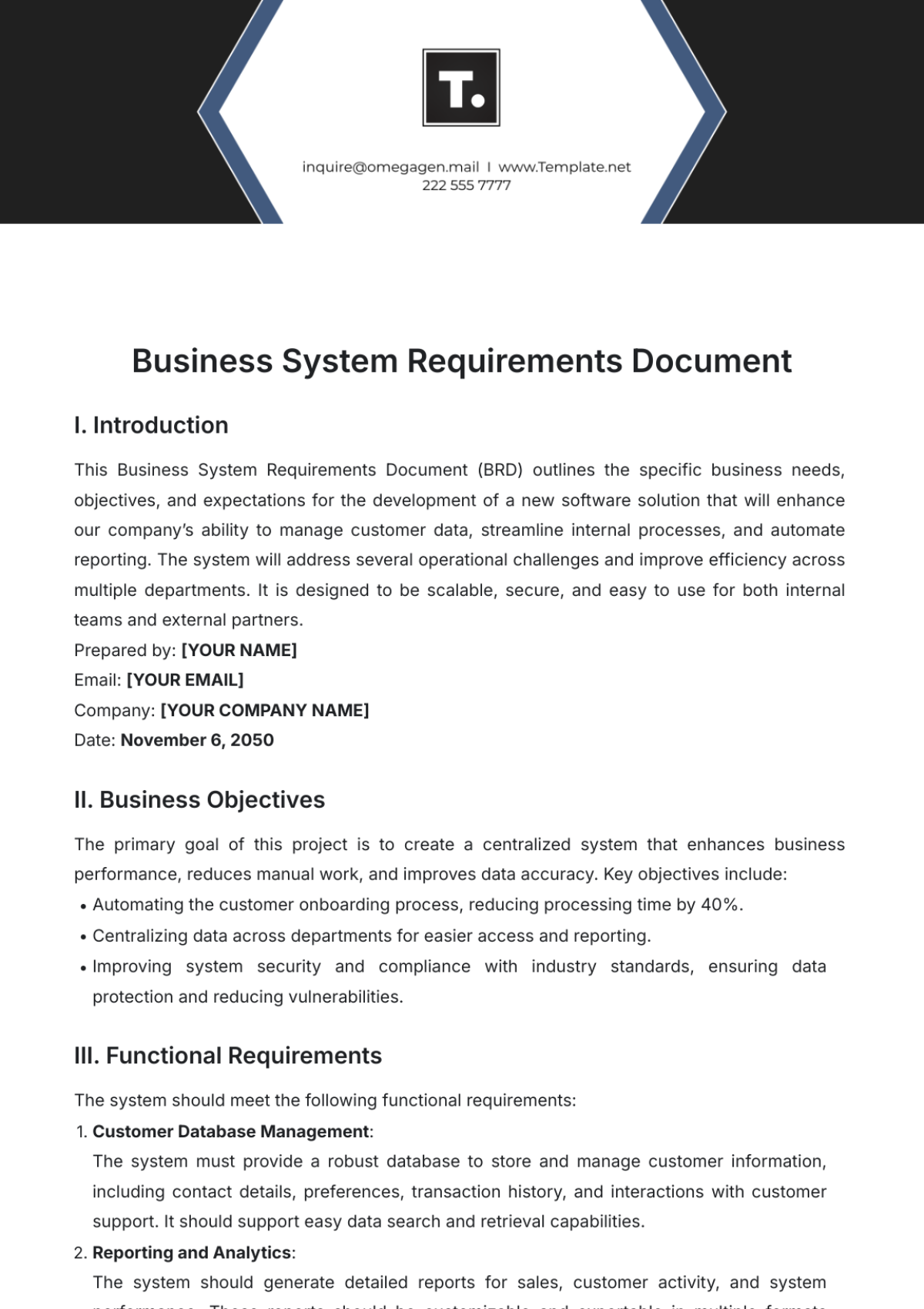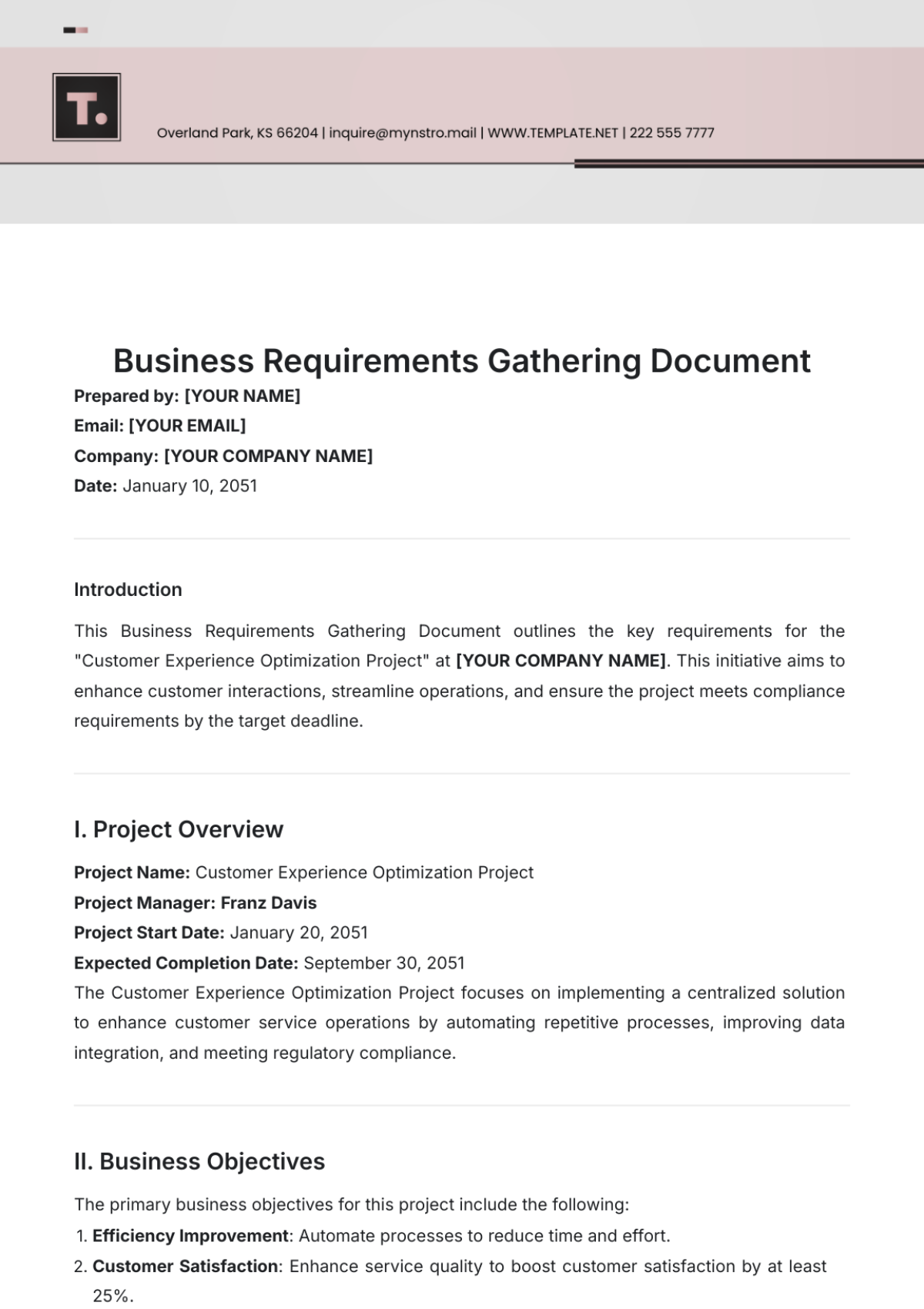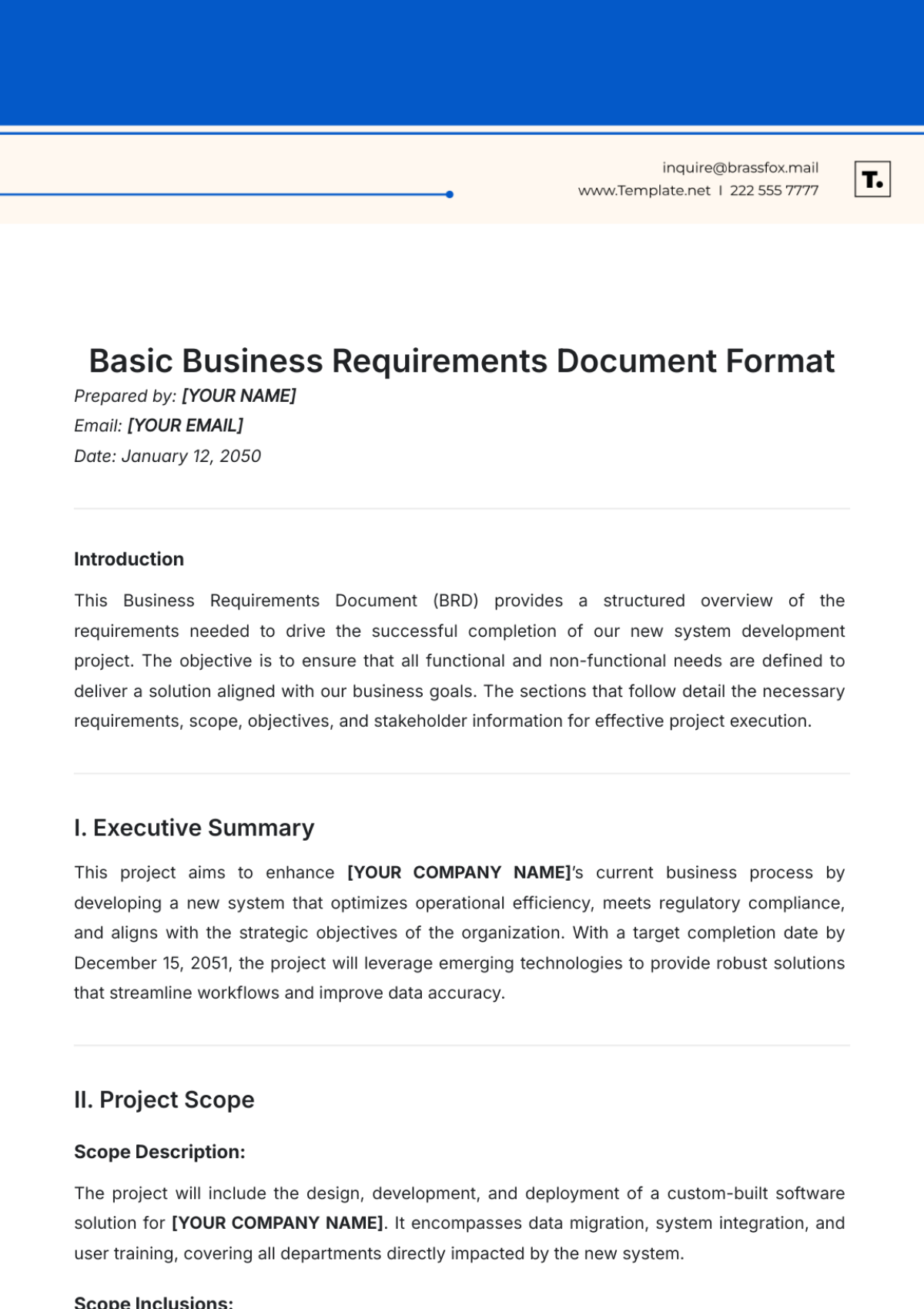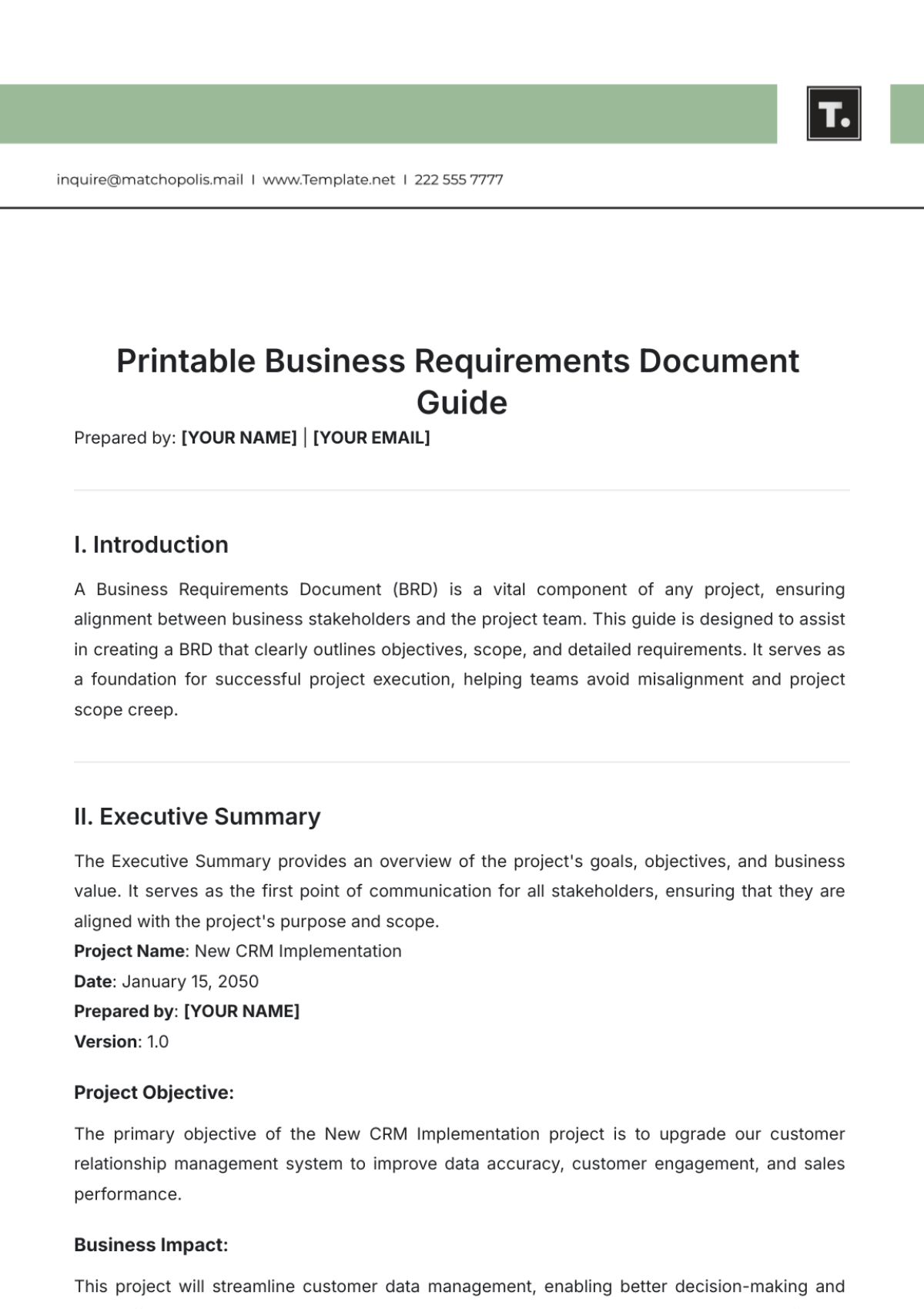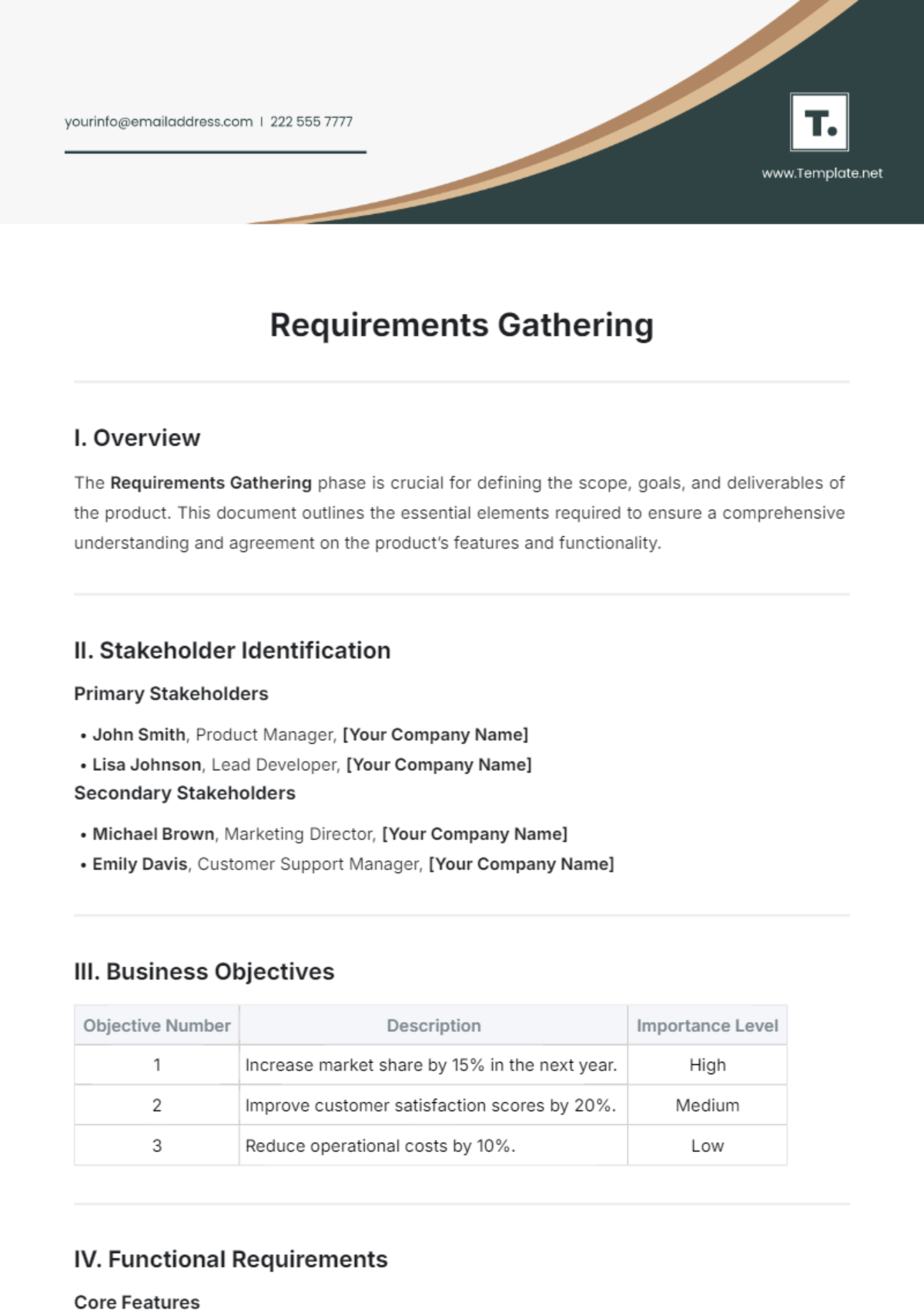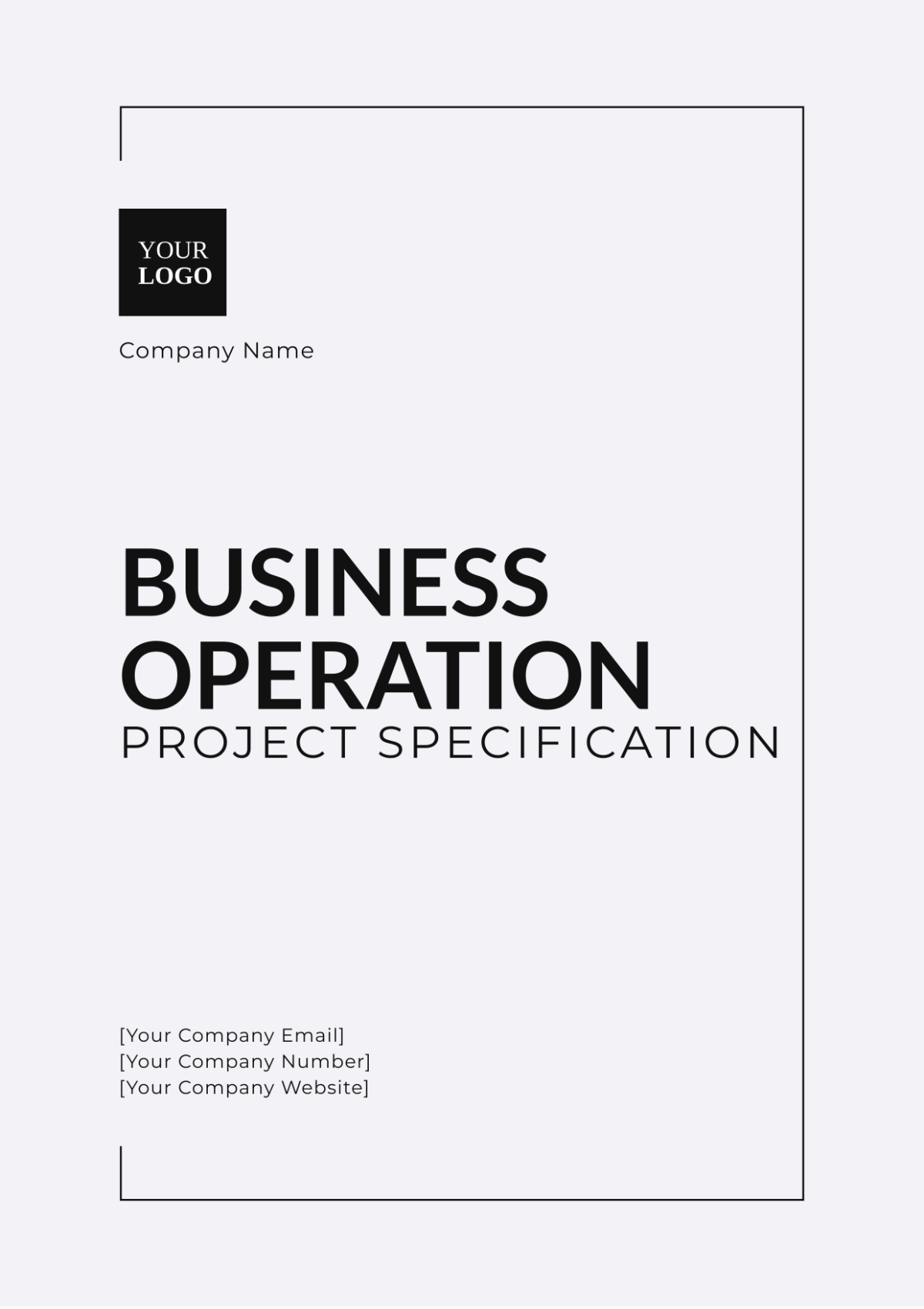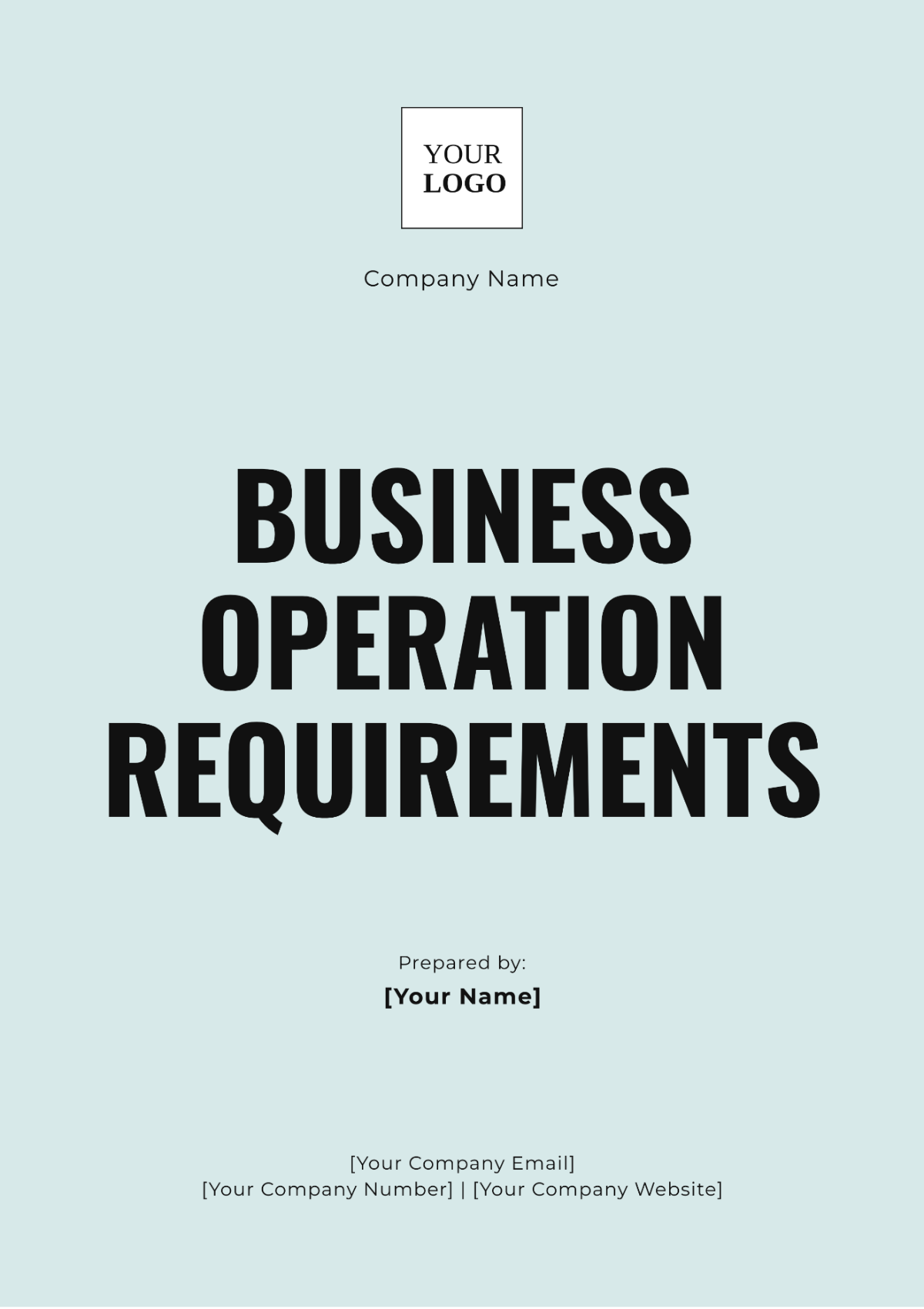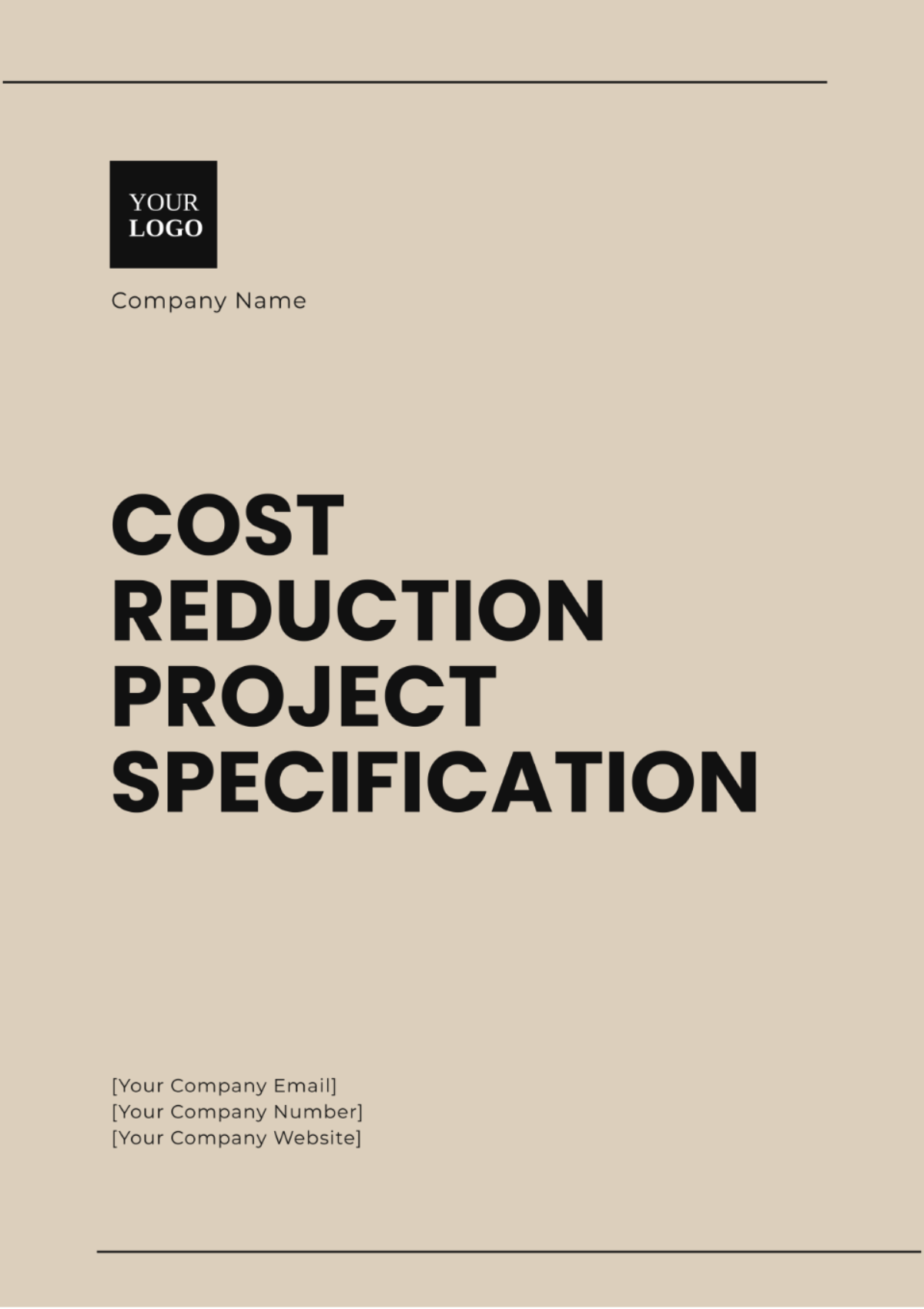Cost Reduction Project Specification
Prepared By: [YOUR NAME]
Date: [DATE]
I. Executive Summary
This project aims to reduce operational costs by 15% over the next 12 months. By optimizing our supply chain, streamlining processes, and improving energy efficiency, we anticipate significant cost savings and enhanced operational efficiency. The project will focus on key areas such as procurement, labor costs, and energy usage.
II. Introduction
In response to increasing operational expenses and the need for improved profitability, this project has been initiated to identify and implement cost-saving measures. The relevance of this project lies in its potential to strengthen our financial position and enhance overall business sustainability.
III. Project Objectives
Achieve 15% Reduction in Operational Costs: Cut overall expenses by 15% within 12 months through targeted strategies and cost center evaluations.
Reduce Procurement Costs by 10%: Lower procurement expenses by 10% by renegotiating with suppliers, combining purchases, and improving inventory management.
Decrease Energy Expenses by 8%: Cut energy costs by 8% using energy-efficient technologies, smart management systems, and regular audits.
Optimize Labor Costs: Streamline labor costs by improving staffing efficiency, better scheduling, and reducing overtime.
IV. Scope of Work
Procurement Processes: Revise and renegotiate supplier contracts to secure better terms, streamline procurement procedures, and enhance inventory management for cost efficiency.
Labor Management: Evaluate workforce productivity, optimize staffing levels, and minimize overtime through improved scheduling and resource allocation.
Energy Usage: Adopt cutting-edge energy-efficient technologies, implement smart energy management practices, and continuously monitor and analyze energy consumption patterns.
Operational Processes: Identify and address inefficiencies within operational workflows, leveraging process improvements to enhance overall productivity and effectiveness.
V. Methodology
Data Collection: Collect comprehensive expenditure data and detailed process documentation to establish a baseline for analysis.
Analysis: Conduct a comprehensive cost-benefit analysis to determine and pinpoint the specific areas that exhibit the greatest potential for cost savings.
Benchmarking: Evaluate current costs against industry standards and best practices to identify gaps and opportunities for improvement.
Implementation: Design and execute targeted strategies based on the analysis to achieve identified savings and efficiencies.
Review: Continuously monitor the effectiveness of implemented measures, making data-driven adjustments as needed to ensure optimal results.
VI. Project Timeline
Milestone | Description | Deadline |
|---|---|---|
Data Collection | Project kickoff, gathering expenditure data, and initial analysis. | Month 1 |
Analysis Phase | Detailed analysis and benchmarking, proposal of cost-saving measures. | Month 2-3 |
Implementation Planning | Approval and finalization of the implementation plan. | Month 4 |
Execution Phase | Implementation of cost-saving measures. | Month 5-9 |
Review and Reporting | Monitoring, reporting, and final evaluation. | Month 10-12 |
VII. Resources Required
A. Personnel
Project Manager: Oversees project execution and serves as a liaison, promoting effective teamwork and communication between the different teams.
Financial Analyst: Conducts a thorough examination of expense information and assesses the potential financial consequences.
Procurement Specialist: Manages and leads detailed negotiations with multiple suppliers to secure advantageous terms, while consistently optimizing procurement processes to boost efficiency and cost-effectiveness.
Energy Consultant: Provides guidance and recommendations on the implementation and utilization of energy-saving technologies and strategies.
B. Budget
Estimated Total: $100,000
C. Tools
Cost Analysis Software: To conduct a comprehensive financial analysis and maintain meticulous tracking of all financial activities.
Energy Monitoring Tools: To thoroughly evaluate and develop effective strategies for monitoring, controlling, and optimizing energy consumption, while implementing measures to reduce energy usage and improve overall energy savings.
Project Management Software: Assists in the organization, scheduling, and implementation of project tasks, and monitors the advancement and status of the project to ensure that it progresses according to plan.
VIII. Risk Assessment
A. Potential Risks
Resistance to Change: Implement a robust change management strategy that includes transparent communication, regular updates, and comprehensive training programs. Engage stakeholders early to address concerns and build buy-in.
Unanticipated Costs: Establish a contingency budget of $5,000 to cover unforeseen expenses. Regularly review financial reports and adjust the budget as necessary to manage unexpected costs effectively.
Implementation Delays: Develop a detailed project plan with clearly defined milestones and deadlines. Conduct regular progress reviews and adapt the plan as needed to address any delays promptly. Ensure effective coordination among team members to keep the project on track.
B. Mitigation Strategies
It's essential to create a detailed change management plan, closely monitor the budget for appropriate and efficient allocation of funds, and adjust project timelines as needed to handle unforeseen challenges, ensuring the project's successful and timely completion.
IX. Performance Metrics
Cost Savings: Track the overall percentage reduction in operational costs compared to the baseline. Assess the effectiveness of implemented strategies in achieving the targeted 15% reduction.
Procurement Efficiency: Evaluate the percentage reduction in procurement costs achieved through supplier renegotiations and process optimizations. Analyze improvements in procurement practices and their impact on cost savings.
Energy Efficiency: Monitor and compare energy consumption and associated costs before and after the implementation of energy-saving technologies. Assess the effectiveness of energy-efficient solutions in achieving the 8% reduction target.
Labor Costs: Assess changes in labor expenses and productivity metrics. Evaluate improvements in workforce management, including reductions in overtime and enhancements in staffing efficiency.
X. Implementation Plan
Milestone | Description |
|---|---|
Kickoff Meeting |
|
Data Gathering |
|
Analysis Phase |
|
Strategy Development |
|
Execution |
|
Monitoring |
|
Reporting |
|

